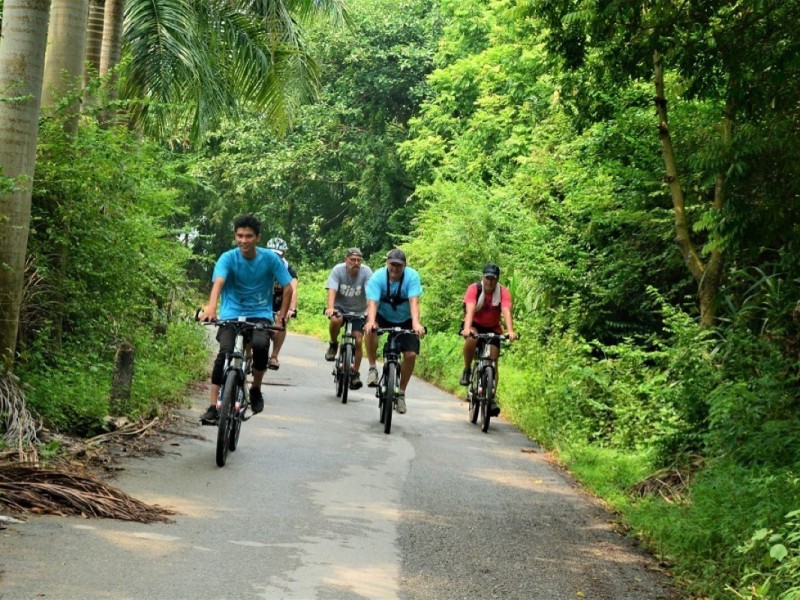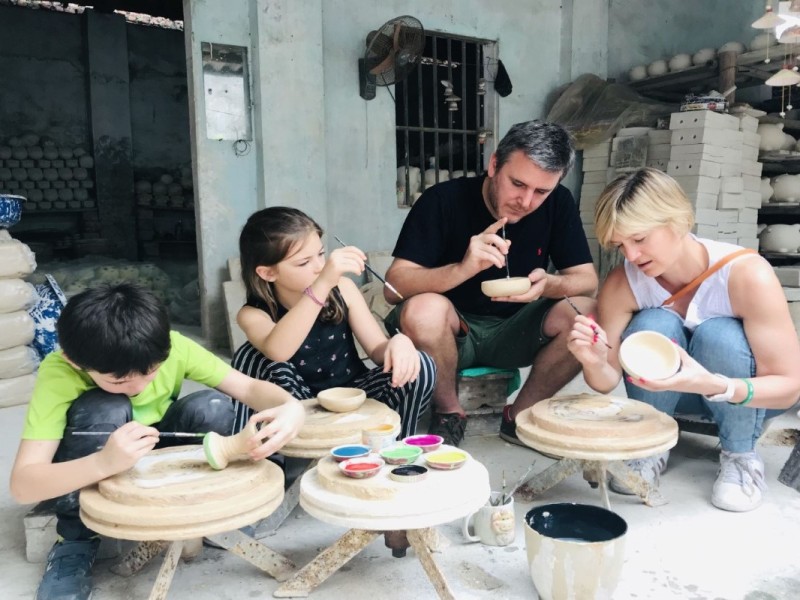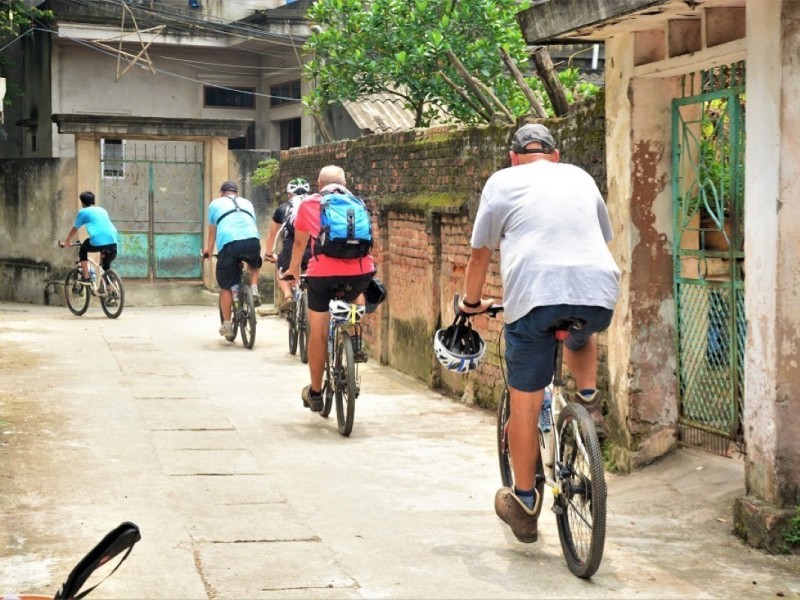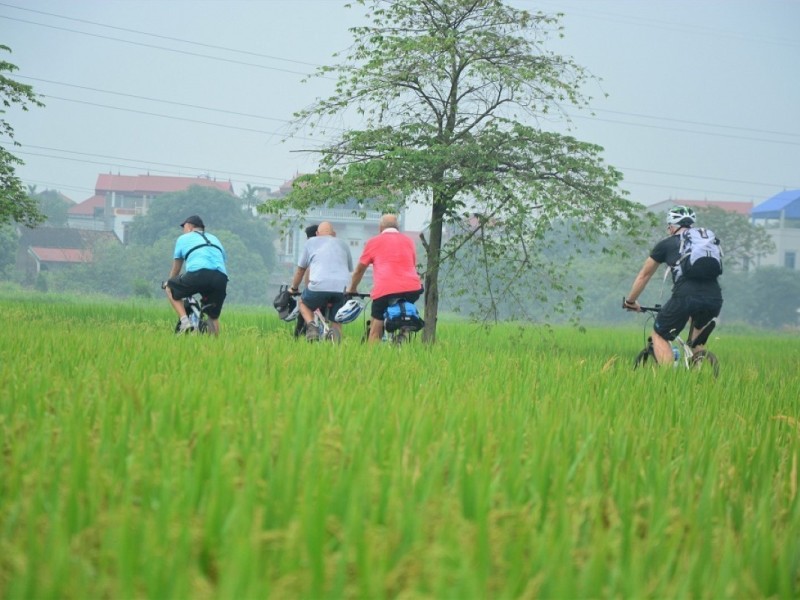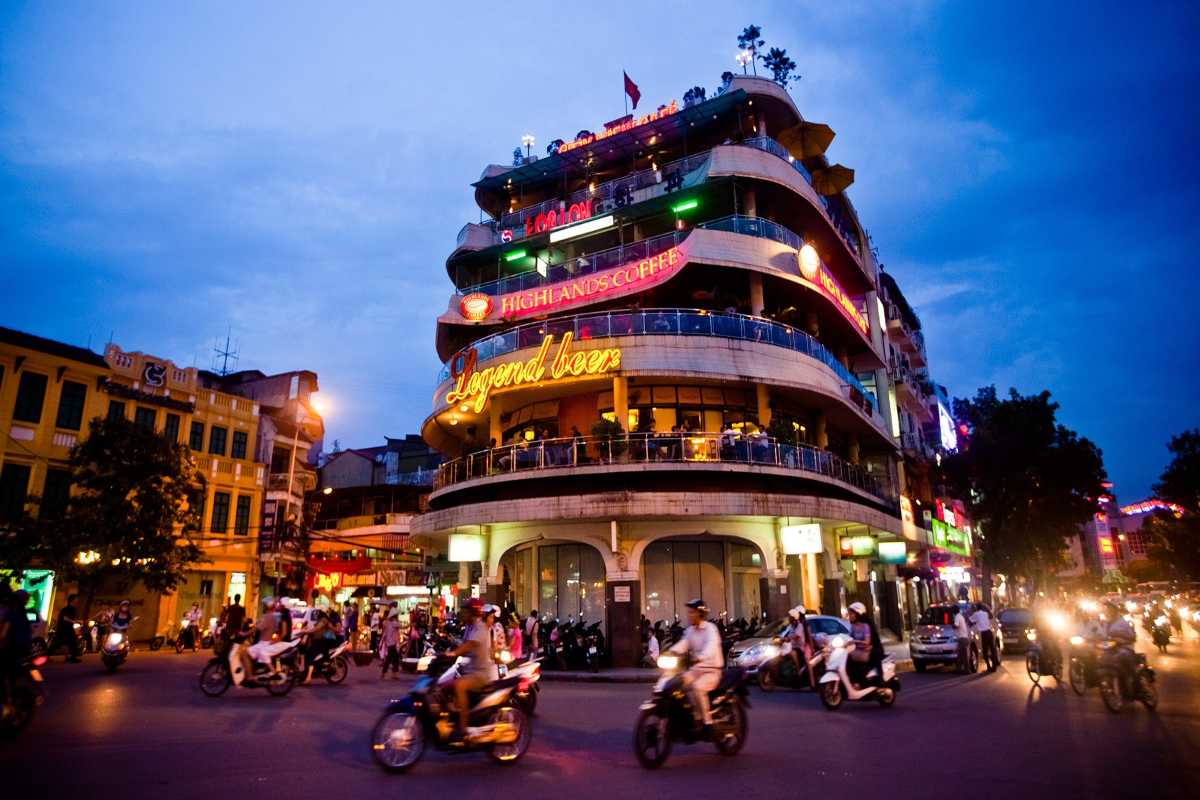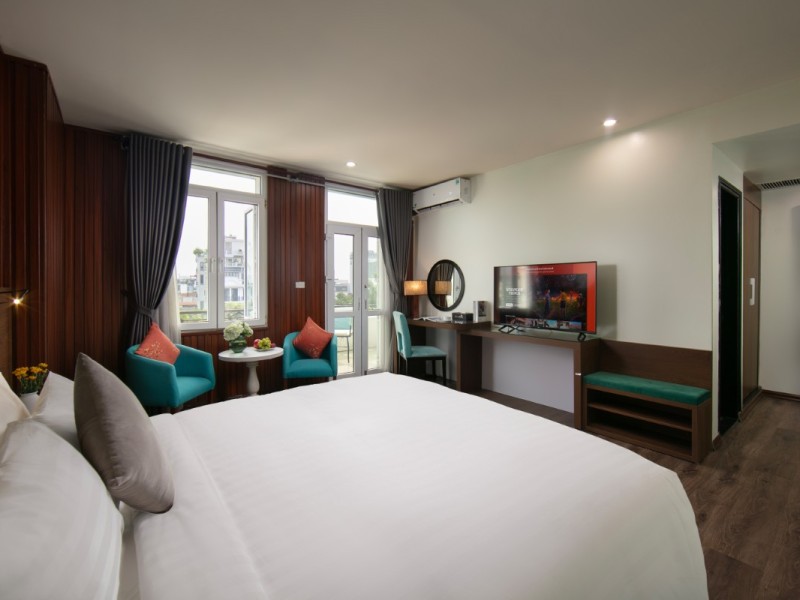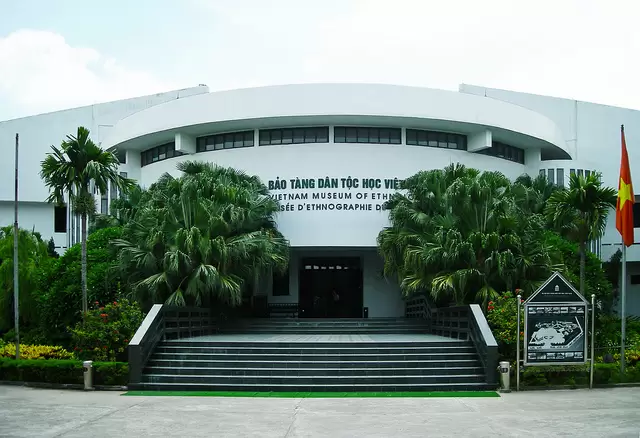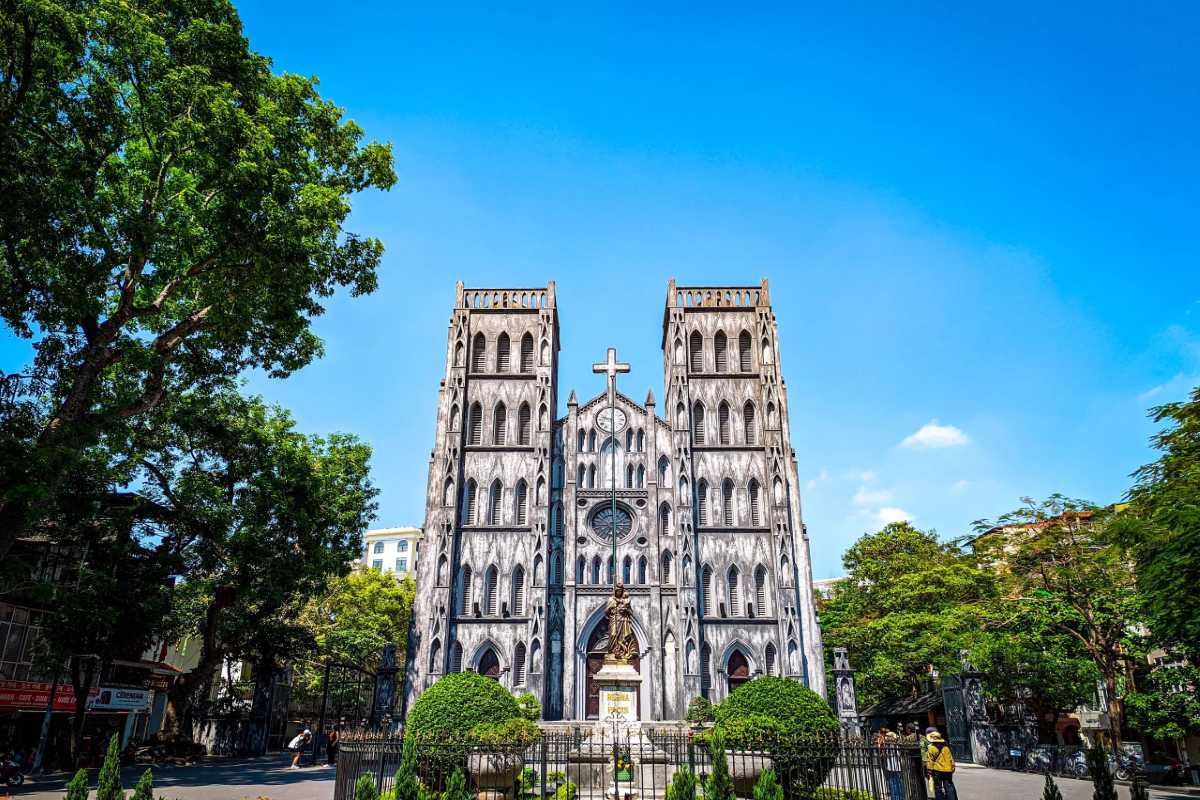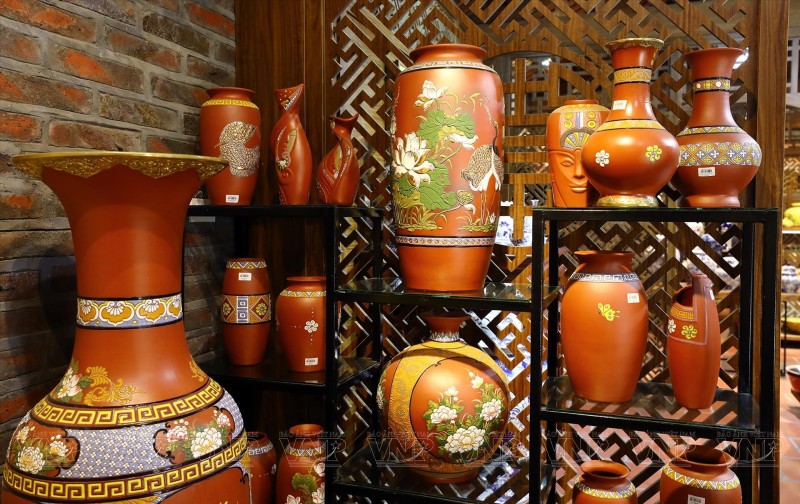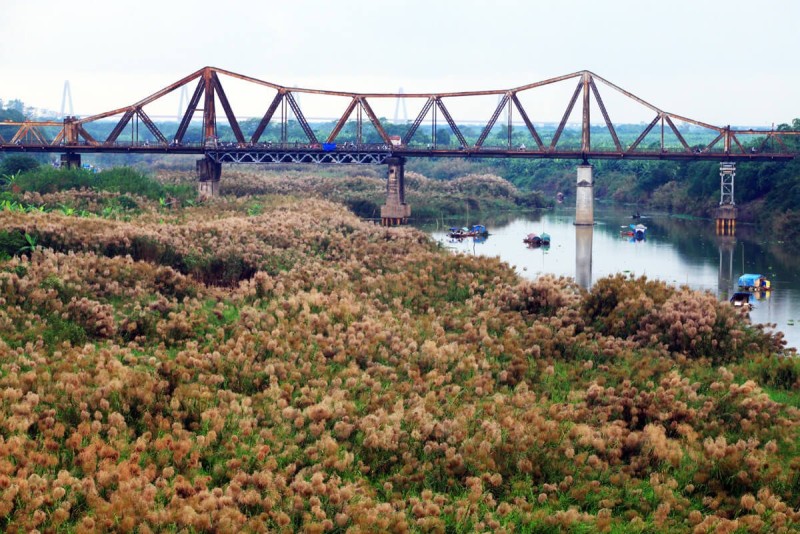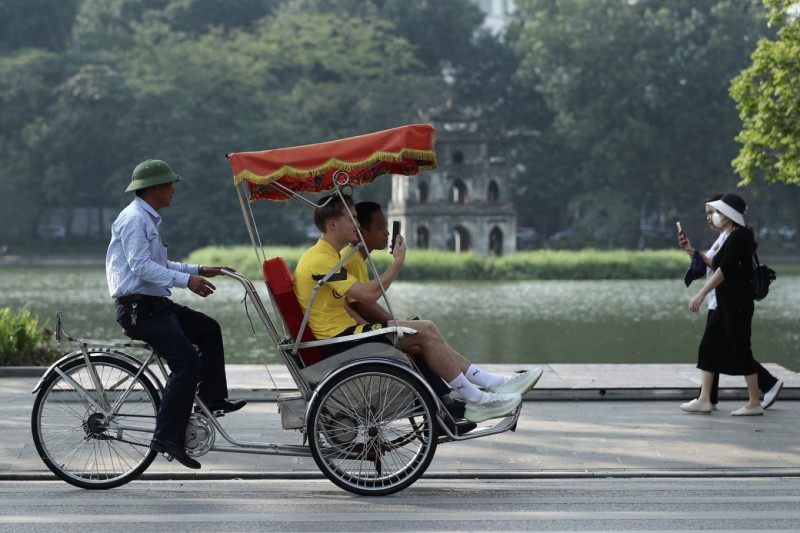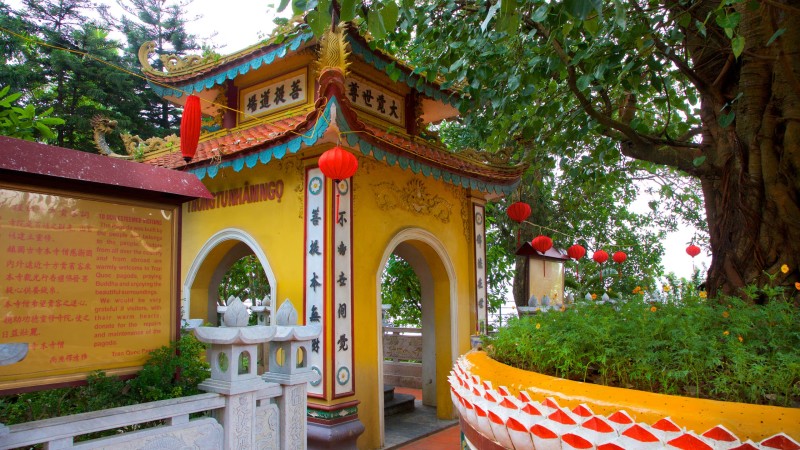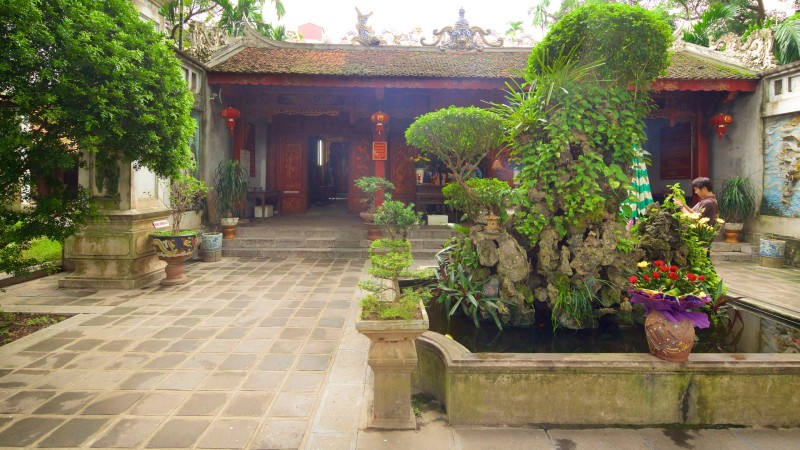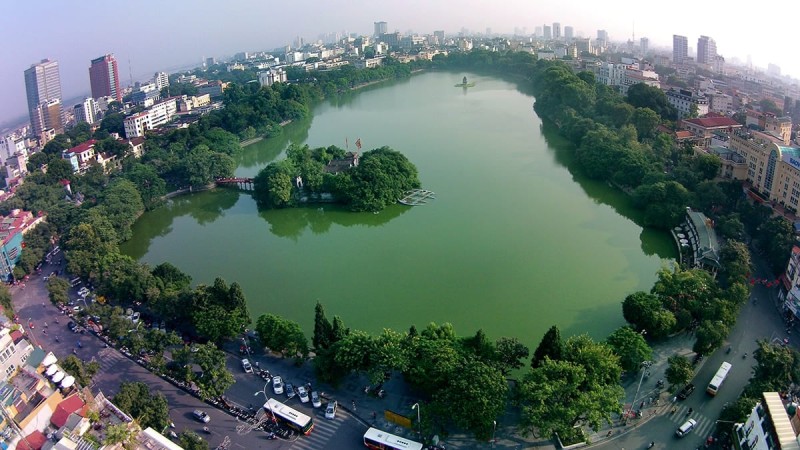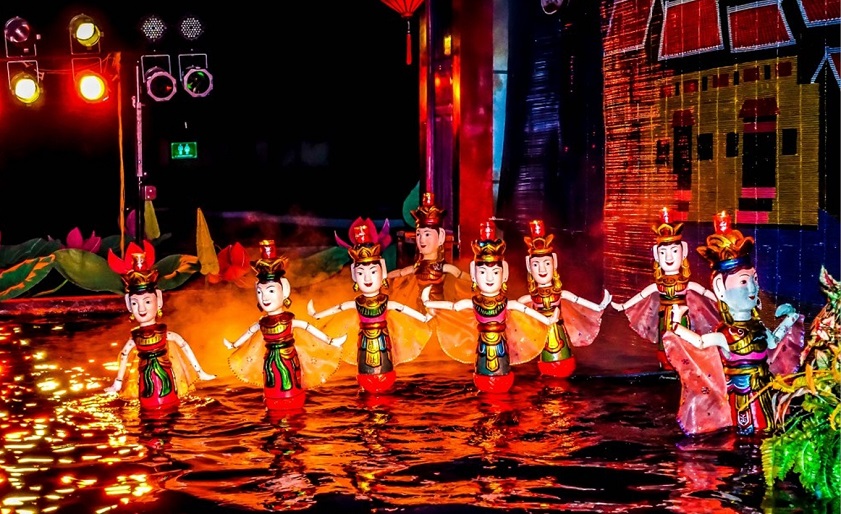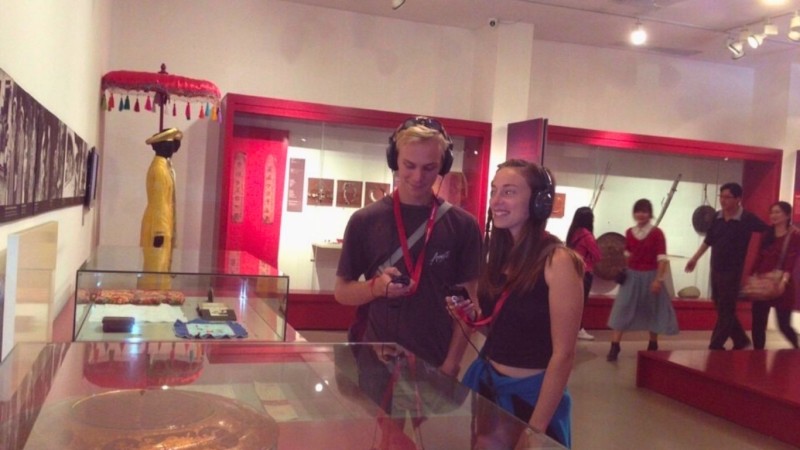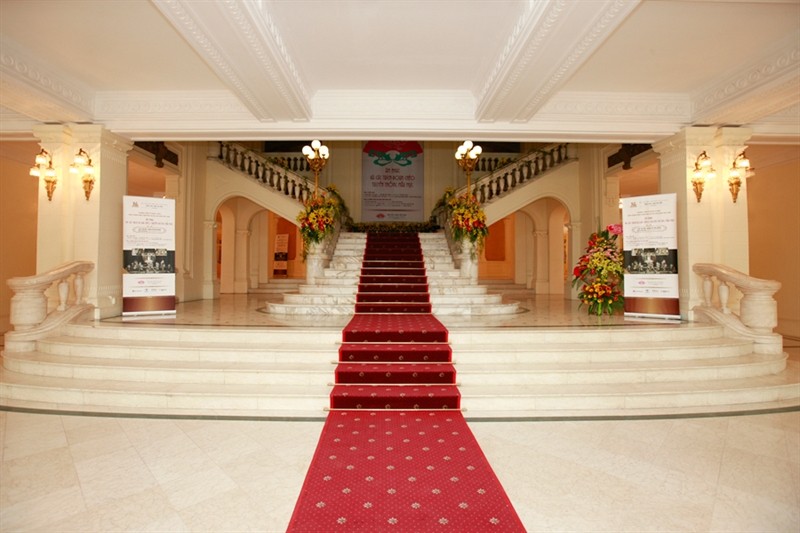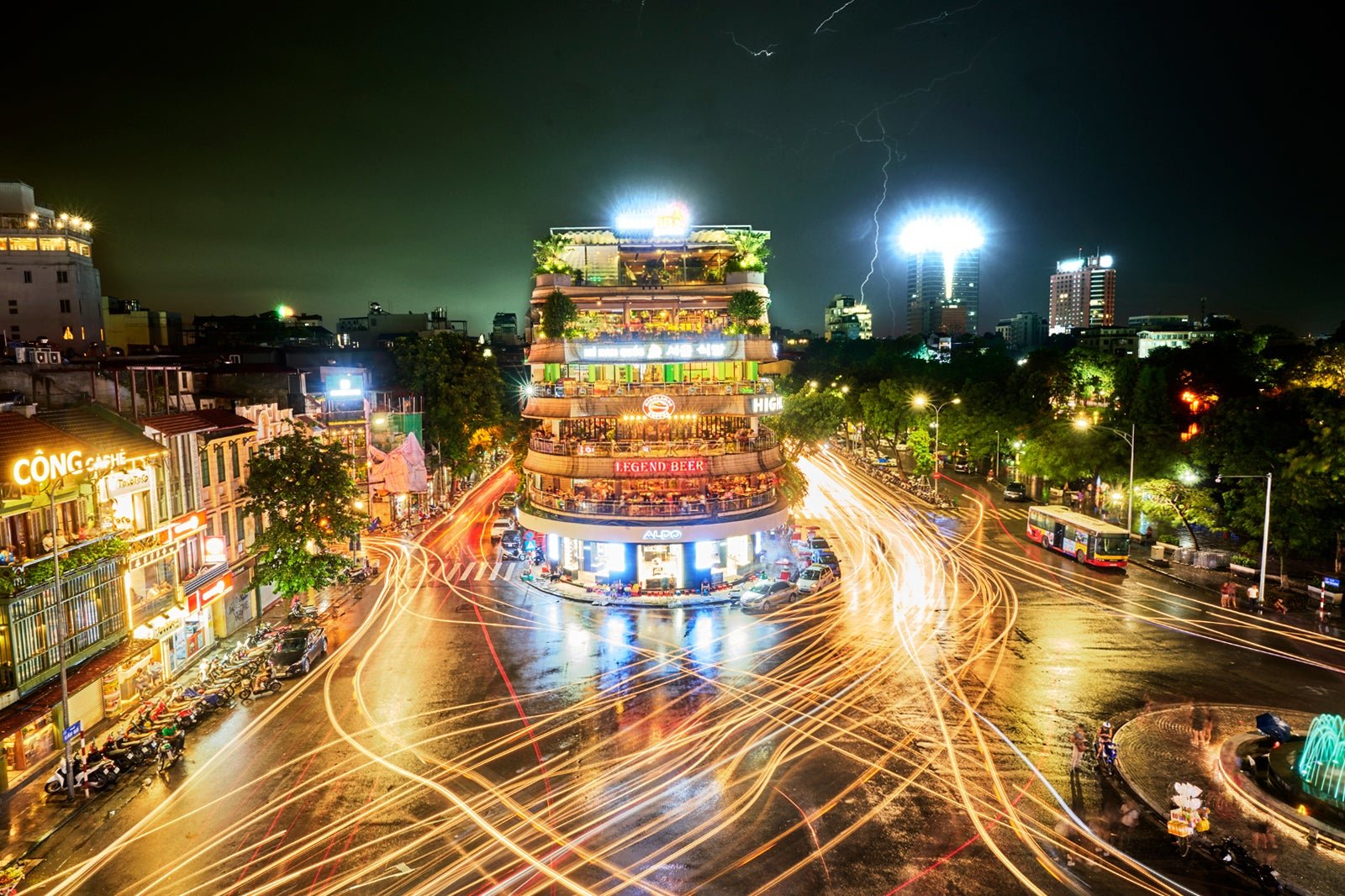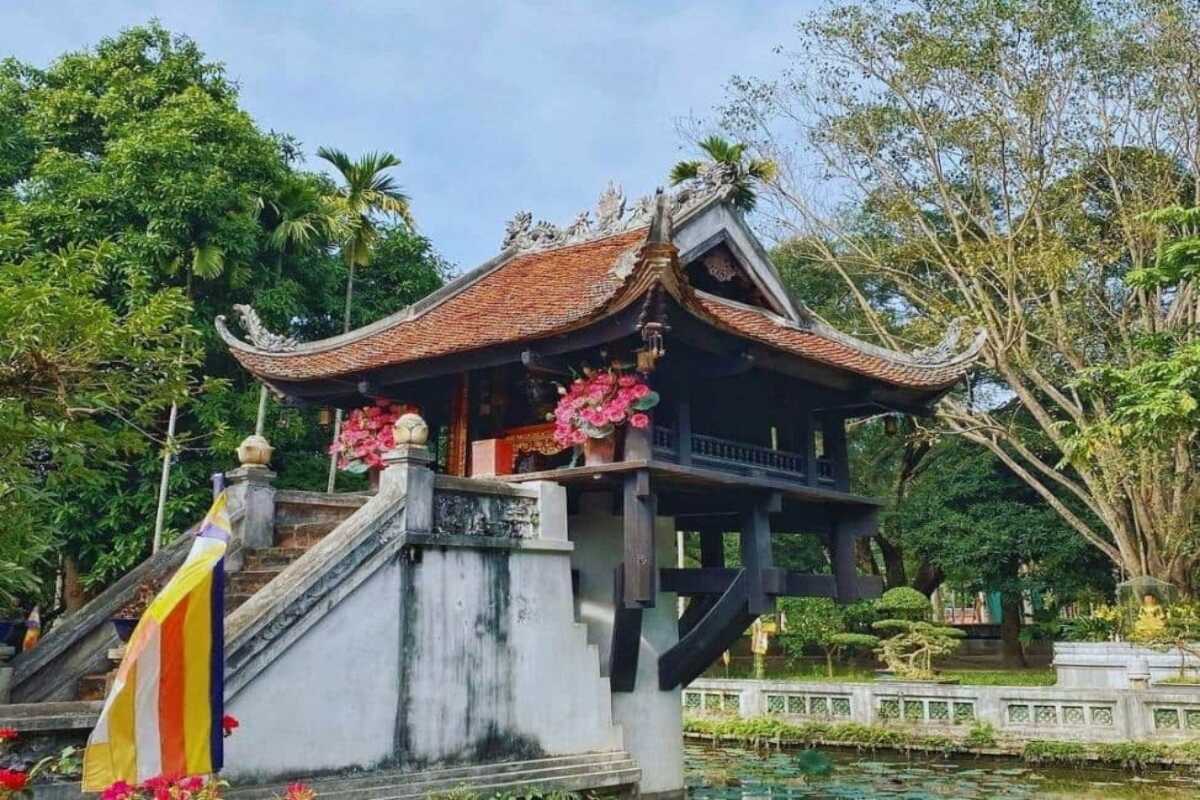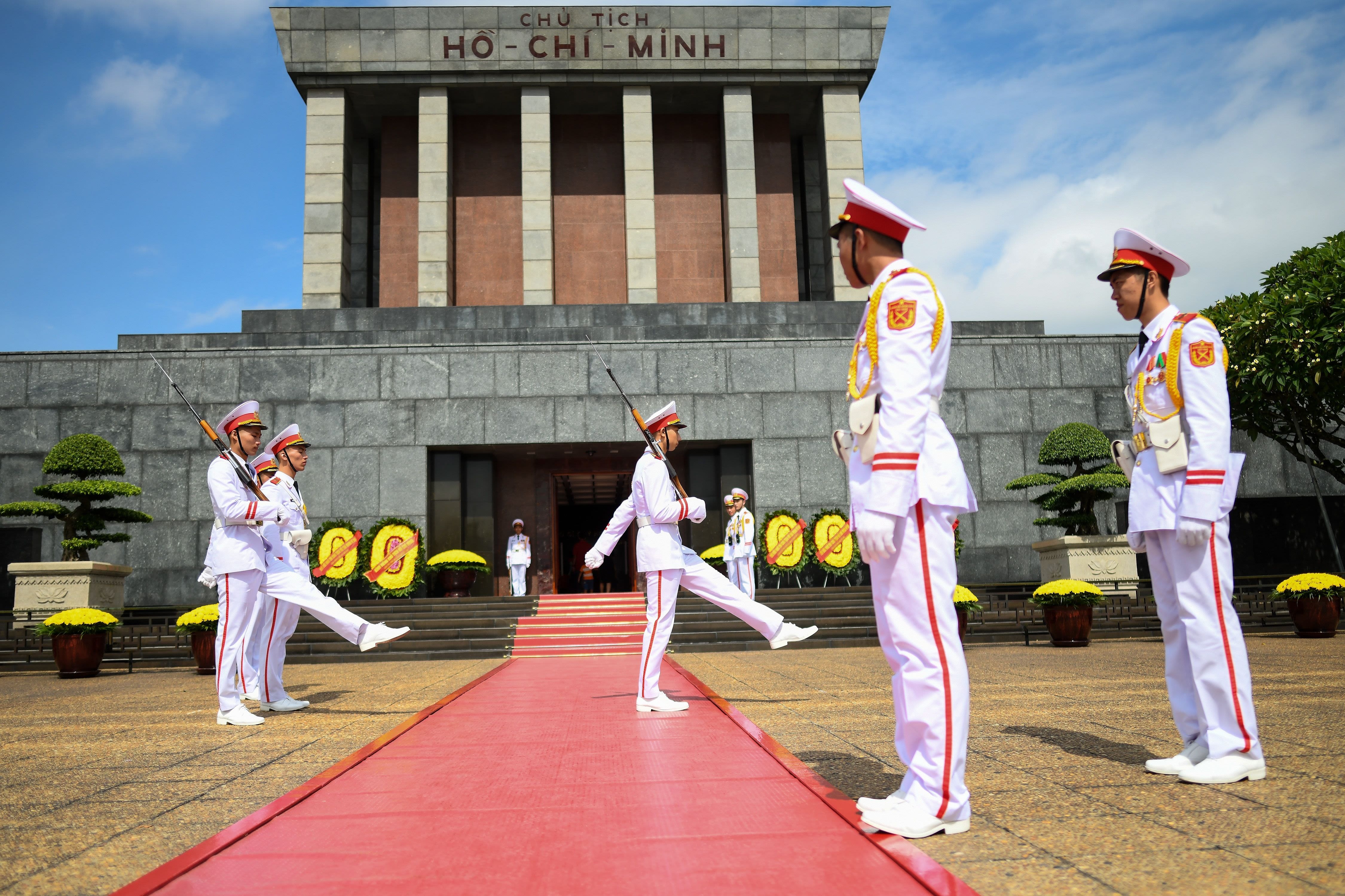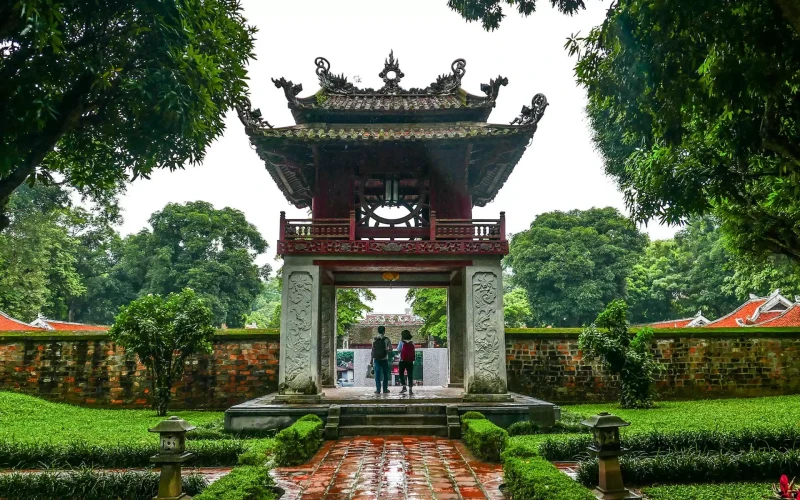Discover Ngoc Son Temple: Hanoi’s Spiritual Gem and Cultural Icon
Ngoc Son Temple offers a serene cultural experience in the heart of Hanoi, located on Hoan Kiem Lake. Visitors can explore its historic architecture, cross the iconic The Huc Bridge, and engage with traditional Vietnamese spiritual practices. The temple stands out for its rich heritage and picturesque lakeside setting.
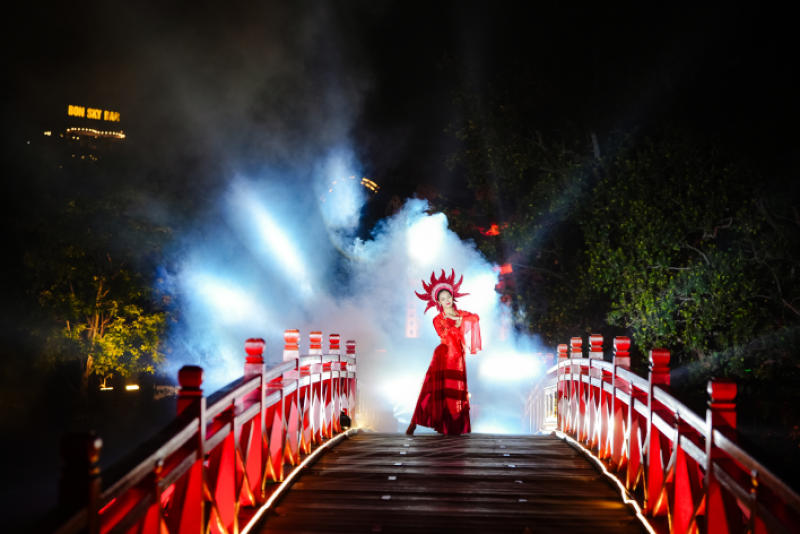
Introduction to Ngoc Son Temple
Ngoc Son Temple is a premier cultural and historic landmark situated in the heart of Hanoi. It stands gracefully on Hoan Kiem Lake, offering visitors a unique blend of spiritual heritage and scenic beauty. As one of Hanoi’s most cherished sites, Ngoc Son Temple reflects centuries of Vietnamese architecture and religious tradition, inviting travelers to immerse themselves in local culture and history. Its proximity to the bustling Hanoi Old Quarter makes it easily accessible for those exploring the city’s cultural highlights. Plan your visit to Ngoc Son Temple to experience an authentic slice of Vietnam’s rich heritage.
Discover more about Ngoc Son Temple’s history, location, and visitor experience in the sections below.
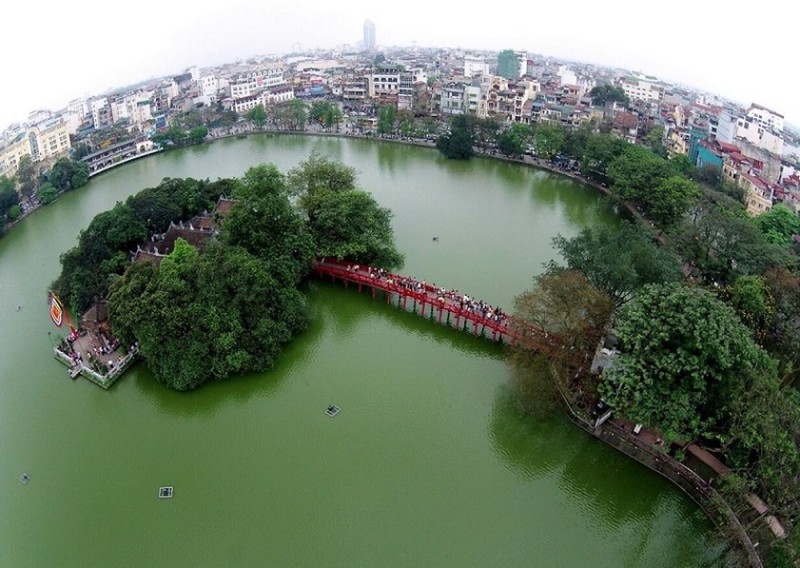
Overview and significance of Ngoc Son Temple
Ngoc Son Temple holds a significant place in Hanoi’s cultural and spiritual landscape. Founded centuries ago, it honors several historical and religious figures, including Tran Hung Dao, a revered national hero. The temple symbolizes the rich spiritual traditions and the historical resilience of the Vietnamese people. Its tranquil atmosphere offers a peaceful retreat amid the city’s lively pace. Visitors appreciate the temple’s unique blend of religious devotion and cultural celebration, making it a must-see on any Hanoi itinerary. Learn why Ngoc Son Temple remains a vital part of Vietnamese heritage.
Plan your exploration of Ngoc Son Temple to connect deeply with Hanoi’s history and spiritual life.
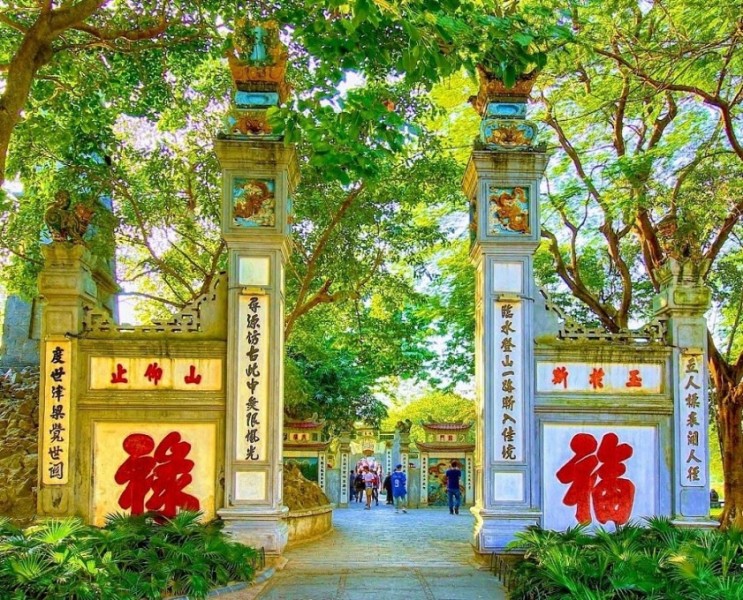
Location and setting on Hoan Kiem Lake
Ngoc Son Temple is beautifully located on a small islet in Hoan Kiem Lake, a central and iconic landmark of Hanoi. The temple is accessible via The Huc Bridge, a striking red wooden structure that leads visitors from the lake’s shore to the temple grounds. This lakeside setting offers picturesque views and a serene environment that contrasts with the nearby vibrant Hanoi Old Quarter. Visitors can enjoy peaceful walks around Hoan Kiem Lake before or after visiting the temple. The temple’s location makes it a perfect stop for those exploring Hanoi’s cultural and historic heart.
Plan your visit with the location of Ngoc Son Temple in mind to enjoy both the spiritual site and its scenic surroundings.
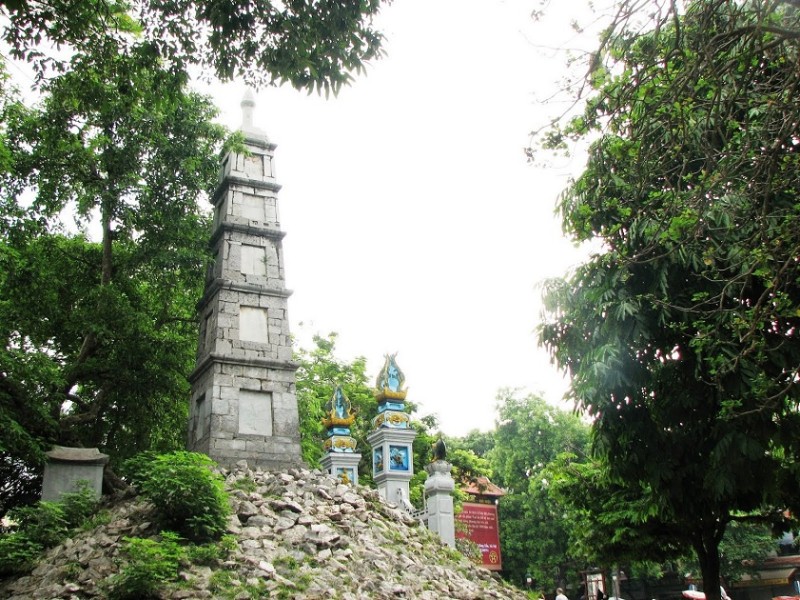
Brief summary of what visitors can expect
Visitors to Ngoc Son Temple can expect a rich cultural and spiritual experience set in a peaceful lakeside environment. The temple complex features beautifully preserved architecture, intricate altars, and statues that showcase Vietnamese craftsmanship. Crossing The Huc Bridge is a highlight that connects visitors symbolically to the spiritual world. You can observe local prayer rituals and learn about Vietnamese traditions while enjoying the tranquil beauty of Hoan Kiem Lake. Whether you are interested in history, culture, or photography, Ngoc Son Temple offers diverse experiences for every traveler.
Enhance your Hanoi itinerary by including a visit to Ngoc Son Temple and its surrounding attractions.
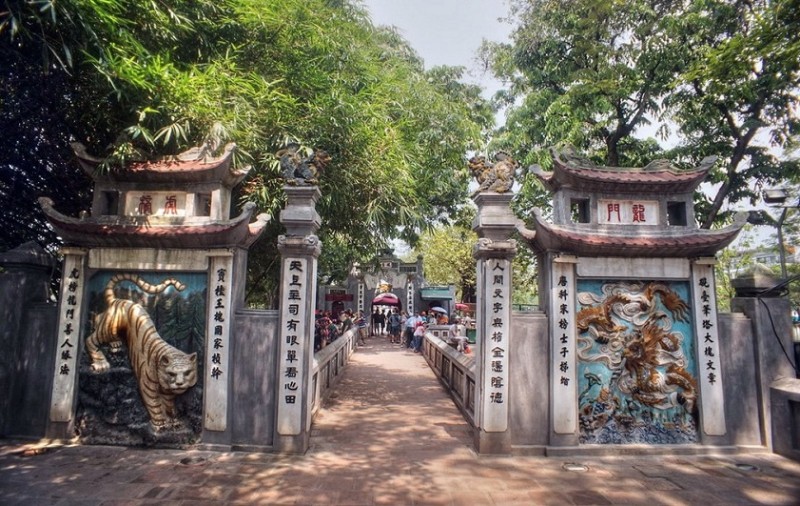
History and Cultural Importance
Ngoc Son Temple stands as a significant cultural and historic landmark in Hanoi, embodying centuries of Vietnamese tradition and spiritual heritage. Founded in the 18th century, it reflects traditional Vietnamese architecture and holds symbolic importance in the city’s cultural life. The temple honors revered figures such as Tran Hung Dao and is accessed via the iconic The Huc Bridge, which symbolizes the connection between the earthly and spiritual realms. Visitors can appreciate its rich history, architectural beauty, and ongoing role in Vietnamese culture. Exploring Ngoc Son Temple offers a meaningful glimpse into Hanoi’s past and spiritual landscape. Plan your visit to Ngoc Son Temple to experience this blend of history and culture firsthand.
Discover the origins, construction, and cultural role of Ngoc Son Temple in the sections ahead.
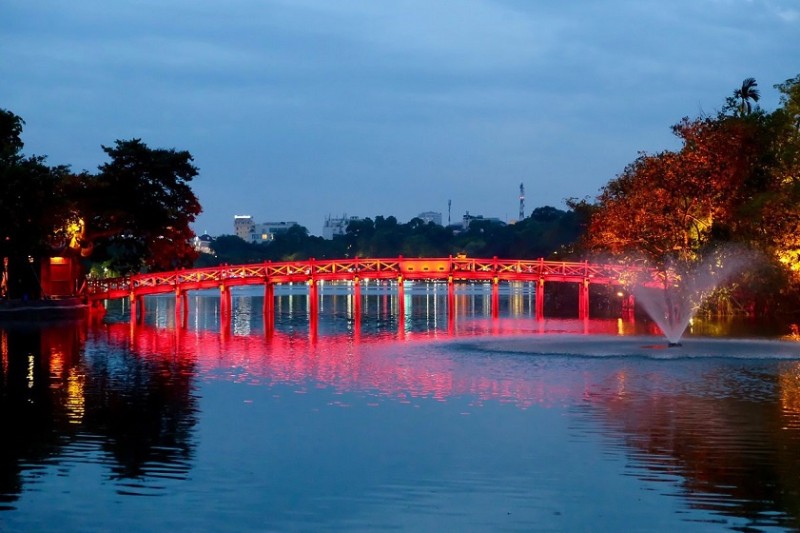
Origins and construction of Ngoc Son Temple
The origins of Ngoc Son Temple date back to the 18th century when it was established to honor spiritual and historical figures important to Vietnam. The temple’s construction reflects the architectural styles of the period, featuring traditional Vietnamese craftsmanship. It was built to serve as a place of worship and cultural significance, commemorating heroes such as Tran Hung Dao, a respected military leader. This foundation set the tone for Ngoc Son Temple’s lasting spiritual and cultural importance in Hanoi. Learning about its origins helps visitors appreciate the depth of Vietnam’s historical narrative embedded in this landmark.
Plan your exploration by understanding how Ngoc Son Temple was founded and its architectural heritage.
Founding period and original purpose
Ngoc Son Temple was founded during the 18th century as a spiritual site dedicated to honoring Confucian, Taoist, and Buddhist traditions. It served as a place for worship, reflection, and cultural gathering, blending religious practices in one location. The temple’s establishment aligned with the era’s emphasis on honoring national heroes and spiritual figures, aiming to inspire patriotism and moral virtue among the people.
- Founded in the 18th century: marks the temple’s historical era
- Spiritual site combining multiple religious traditions: Confucianism, Taoism, Buddhism
- Dedicated to national heroes and spiritual figures: promoting cultural values
- Center for worship and community gatherings: fostering local spiritual life
This founding purpose continues to shape Ngoc Son Temple’s role in Hanoi’s cultural fabric. Plan your visit to connect with this deep-rooted spiritual history.
Key historical figures associated with the temple (e.g., Tran Hung Dao)
Several prominent figures are associated with Ngoc Son Temple, deepening its historical and cultural significance.
- Tran Hung Dao: a celebrated 13th-century military leader and national hero
- Van Xuong: a revered scholar and philosopher honored within the temple
- General Tran Quoc Tuan: noted for his contributions to Vietnam’s history
- Local spiritual figures: who shaped religious practices at the temple
These figures reflect the temple’s role as a monument to Vietnam’s heritage and valor. Learning about them enriches the visitor’s appreciation of Ngoc Son Temple’s cultural importance. Plan your visit with knowledge of the temple’s notable historical personalities.
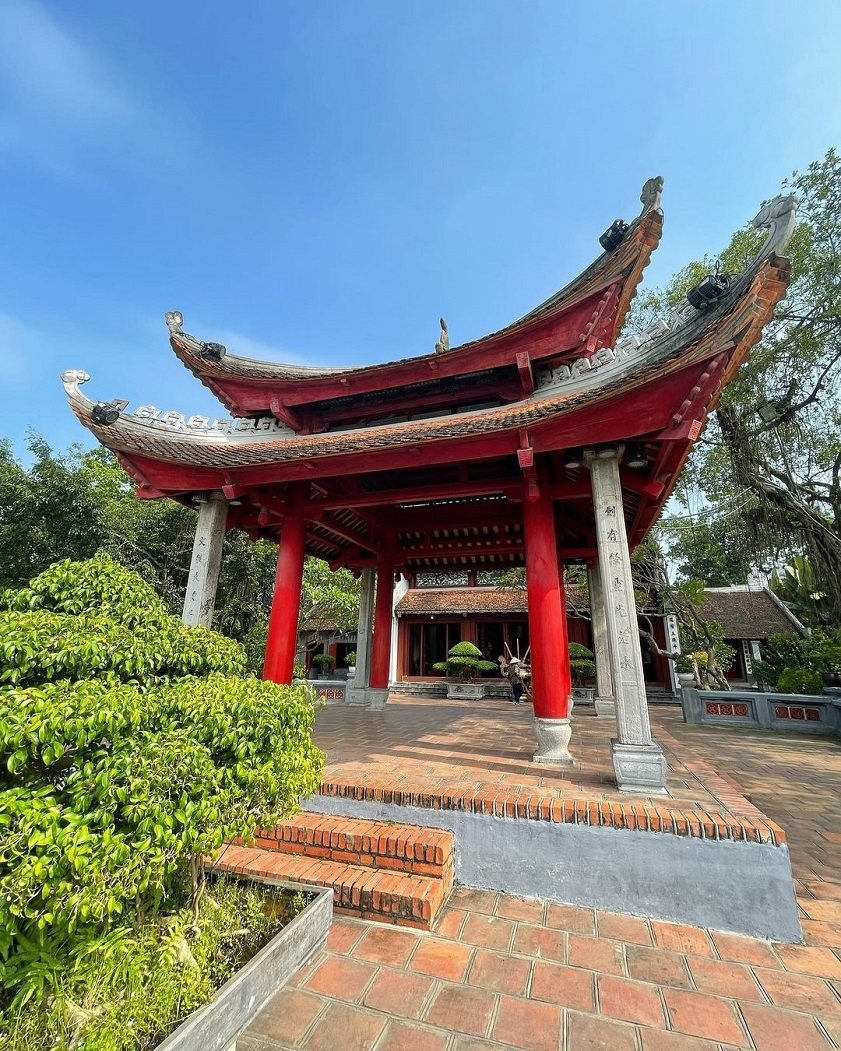
Architectural style and symbolism
Ngoc Son Temple showcases traditional Vietnamese architectural elements that blend aesthetics with deep cultural symbolism. Its design reflects the craftsmanship and spiritual values embedded in Vietnam’s heritage. The temple features intricate wooden carvings, ornate altar statues, and a distinctive layout that guides visitors through its sacred spaces. A highlight is The Huc Bridge, whose vibrant red color symbolizes happiness and good fortune, creating a striking entrance that connects the temple to the tranquil Hoan Kiem Lake. Understanding these architectural details enriches your appreciation of the temple’s artistic and spiritual significance. Discover the unique blend of design and symbolism that defines Ngoc Son Temple.
Experience the harmony of tradition and symbolism by exploring Ngoc Son Temple’s architecture.
Traditional Vietnamese design elements
Ngoc Son Temple incorporates distinctive features of Vietnamese architecture that highlight cultural artistry.
- Vietnamese roof tiles: curved, overlapping tiles that protect and decorate temple roofs
- Wooden carvings: detailed hand-carved patterns depicting flora, fauna, and mythical creatures
- Lacquer work: glossy, durable finishes applied to wooden surfaces for beauty and preservation
- Curved eaves: traditional sweeping rooflines symbolizing shelter and protection
- Stone bases and pillars: sturdy foundations reflecting longevity and resilience
These design elements contribute to the temple’s authentic Vietnamese aesthetic and craftsmanship. Observing these features reveals the rich cultural heritage embodied in the temple’s structure. Plan your visit to appreciate these traditional design details up close.
Symbolic features like The Huc Bridge and altar statues
Key features of Ngoc Son Temple carry profound symbolic meaning important to Vietnamese culture.
- The Huc Bridge symbolism: its red hue represents happiness and vitality, linking the earthly world with the spiritual realm
- Altar statues: statues of revered figures and deities symbolize protection, wisdom, and historical reverence
- Incense burners and offerings: ritual objects embody spiritual connection and respect
- Dragon motifs: traditional symbols of power, strength, and good fortune
- Lotus flowers: motifs representing purity and enlightenment in Buddhist philosophy
These symbolic elements invite visitors to connect spiritually and culturally with the temple. Understanding their meaning enhances the visit and deepens respect for Vietnamese traditions. Embrace the cultural symbolism that permeates every corner of Ngoc Son Temple.

Role in Vietnamese spiritual and cultural life
Ngoc Son Temple continues to play a vital role in the spiritual and cultural fabric of Vietnam today. It serves as a center for traditional religious practices, including Buddhist, Taoist, and Confucian rituals, which are observed by locals and visitors alike. The temple hosts various cultural festivals and spiritual ceremonies throughout the year, reflecting deep-rooted Vietnamese traditions and offering a glimpse into the country’s rich heritage. These events foster community connection and keep cultural practices alive amidst Hanoi’s modern urban environment. Visiting Ngoc Son Temple allows you to witness living traditions that have been preserved over centuries.
Plan your visit around key cultural festivals at Ngoc Son Temple to experience authentic Vietnamese spirituality.
Festivals and ceremonies held at the temple
Ngoc Son Temple is home to several important festivals and ceremonies that attract both locals and tourists.
- Lunar New Year Festival: Celebrates the Vietnamese New Year with traditional rituals and offerings
- Mid-Autumn Festival: Marked by lantern displays and cultural performances
- Worship days for Tran Hung Dao: Honoring the national hero with prayer and ceremonies
- An annual lantern festival: Illuminates the temple grounds in vibrant colors
- Traditional music and dance events: Showcasing Vietnamese cultural heritage during special occasions
These events provide an immersive cultural experience and reveal the temple’s significance as a spiritual gathering place. Plan your trip to coincide with these festivals for a memorable visit.
Contemporary cultural relevance
Today, Ngoc Son Temple remains a cherished cultural landmark, symbolizing Vietnam’s enduring heritage and spiritual identity. It attracts not only worshippers but also tourists seeking to understand Hanoi’s history and traditions. The temple’s preservation and continued use reflect a balance between honoring the past and embracing present-day cultural tourism. It contributes to Hanoi’s reputation as a city where ancient customs thrive alongside modern life, enriching visitors’ travel experiences with authenticity and depth.
Include Ngoc Son Temple in your Hanoi itinerary to connect with Vietnam’s cultural heritage and vibrant tourism scene.
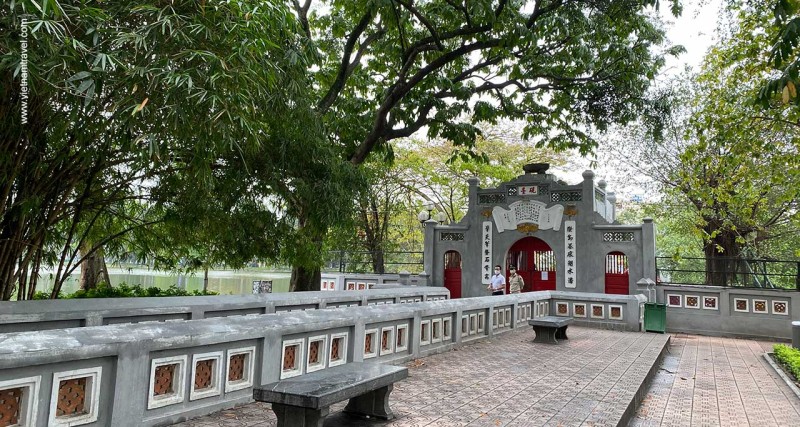
Planning Your Visit
Ngoc Son Temple is centrally located in Hanoi, making it easily accessible for travelers. To help you plan your visit smoothly, this section provides clear directions, opening hours, and ticketing information. Whether you prefer walking from the Hanoi Old Quarter, taking public transport, or using a taxi or cyclo, you’ll find practical advice to optimize your experience. Understanding the best times to visit, including seasonal considerations and special festival days, will help you avoid crowds and enjoy the temple fully. Plan your visit to Ngoc Son Temple with confidence using these essential tips.
Ensure your visit to Ngoc Son Temple is seamless and memorable by following our practical planning advice.
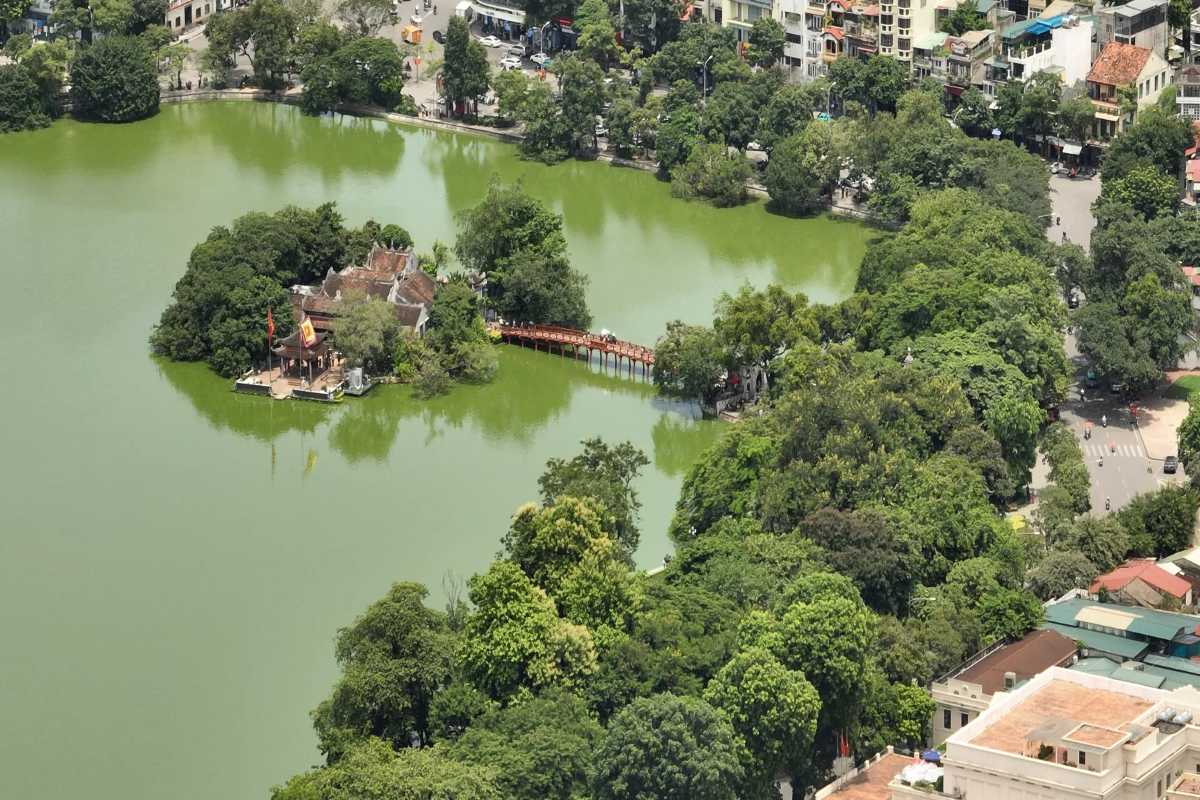
Location details and how to get there
Ngoc Son Temple is situated on a small islet in Hoan Kiem Lake, near the bustling Hanoi Old Quarter. Visitors can reach the temple via several convenient options. Walking from the Old Quarter offers a scenic and immersive route, allowing you to enjoy Hanoi’s vibrant streets before crossing The Huc Bridge to the temple. Public transport options include buses that stop near the lake, while taxis and traditional cyclo rides provide comfortable and flexible alternatives. Choose the option that best fits your schedule and preferences to arrive at Ngoc Son Temple with ease.
Plan your route ahead to maximize your time exploring Hanoi’s cultural heart around Ngoc Son Temple.
Walking routes from Hanoi Old Quarter
For travelers who enjoy walking, reaching Ngoc Son Temple on foot is straightforward and scenic.
- Start at Hoan Kiem Lake’s southern edge near the Old Quarter
- Walk along the lakeside promenade heading north toward The Huc Bridge
- Cross The Huc Bridge, the iconic red wooden bridge leading directly to the temple
- The walk typically takes 10–15 minutes, offering views of the lake and city life
- Ensure comfortable footwear for navigating cobblestone streets and footpaths
Walking to Ngoc Son Temple lets you soak in Hanoi’s atmosphere and prepare for your cultural visit.
Public transport options and bus routes
Using public transport is an affordable way to reach Ngoc Son Temple.
- Bus lines 09, 36, and 52 stop near Hoan Kiem Lake, a short walk from the temple
- Buses operate frequently, though travel times may vary with traffic
- Purchase tickets onboard or at bus stations
- Routes connect the Old Quarter with other Hanoi districts, ideal for wider exploration
- Check updated schedules in advance as routes may change
Public buses offer a budget-friendly option for visiting Ngoc Son Temple and nearby sites.
Taxi, cyclo, and private transfer recommendations
For comfort and convenience, consider these transport choices.
- Taxis provide quick and direct access, ideal if you’re short on time
- Cyclo rides offer a traditional Hanoi experience and slower pace to enjoy city sights
- Private transfers can be pre-booked for hassle-free airport or hotel pick-up
- Note: Negotiate cyclo fares beforehand or use meter taxis to avoid overcharging
- Each option suits different preferences for speed, cost, and cultural immersion
Choose the transport mode that best fits your travel style when visiting Ngoc Son Temple.

Opening hours and best times to visit
Ngoc Son Temple is open daily, welcoming visitors from early morning until evening. Typically, the temple operates from 8:00 AM to 5:00 PM, allowing ample time to explore its grounds and enjoy the serene atmosphere of Hoan Kiem Lake. To avoid peak crowds and enjoy cooler weather, the best times to visit are during the early morning or late afternoon, especially outside of Hanoi’s busy tourist seasons. Seasonal weather can affect your experience, so plan accordingly to make the most of your visit to Ngoc Son Temple.
Consider these opening hours and seasonal tips to schedule your visit efficiently.
Seasonal considerations (weather and crowd levels)
The best season to visit Ngoc Son Temple depends on Hanoi’s weather patterns and tourist influx.
- Spring (March to April): Mild temperatures and blooming flowers create a pleasant atmosphere
- Autumn (September to November): Cool, dry weather with fewer crowds ideal for sightseeing
- Summer (May to August): Hot, humid with occasional heavy rain; expect larger tourist crowds
- Winter (December to February): Cooler temperatures and clear skies, but can be chilly
- Festivals and holidays often increase visitor numbers, so plan accordingly to avoid peak times
Choosing the right season enhances comfort and enjoyment during your visit to Ngoc Son Temple.
Special days and festivals to experience
Visiting Ngoc Son Temple during its special festivals enriches your cultural experience.
- Lunar New Year (Tet): The temple is lively with traditional celebrations and rituals
- Mid-Autumn Festival: Features colorful lantern displays and cultural performances
- Tran Hung Dao Worship Day: Honors the revered national hero with ceremonies
- Lantern Festival: The temple is illuminated beautifully with vibrant lanterns
- Other local festivals showcase traditional music, dance, and spiritual rites
Planning your trip around these festivals allows you to witness authentic Vietnamese culture at Ngoc Son Temple.
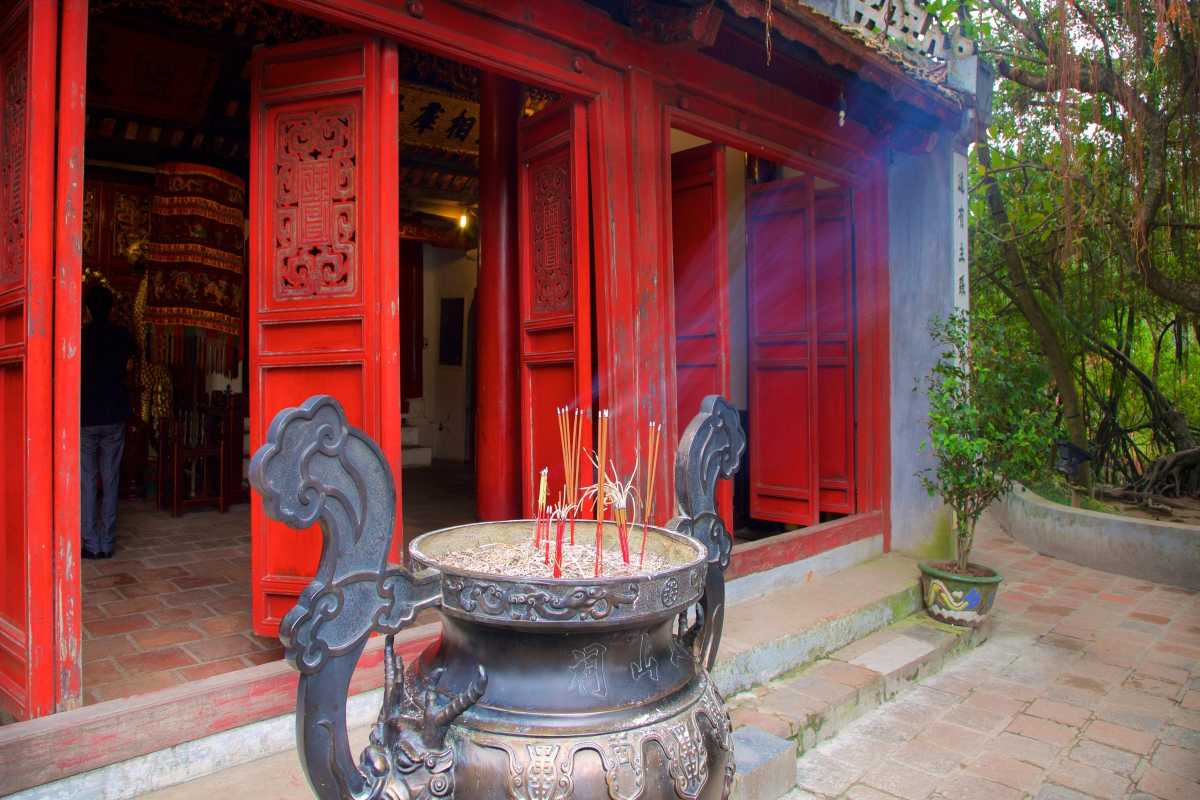
Entry fees and ticketing information
Visiting Ngoc Son Temple requires an entry fee that varies depending on age and nationality. Tickets can be purchased easily on-site or through authorized online platforms to avoid long queues and ensure authenticity. Some visitors may qualify for discounted rates, including students and seniors. Knowing the ticket price and where to buy tickets in advance will help you plan your visit efficiently without unexpected delays or confusion. Prepare to enjoy the temple’s cultural richness with straightforward ticketing information.
Secure your tickets early to experience Ngoc Son Temple without hassle.
Ticket prices and discounts
Current ticket prices for Ngoc Son Temple are as follows:
- Adults (foreign visitors): Approximately 50,000 VND
- Vietnamese citizens: Usually free or at a reduced rate
- Students and seniors: Eligible for discounted tickets with valid ID
- Children under a certain age: Often free entry
- Special group rates may apply for tours or large groups
These prices are subject to change, so check the latest information before your visit to maximize savings.
Where and how to buy tickets
Tickets for Ngoc Son Temple can be purchased conveniently through:
- On-site ticket counters located near the temple entrance
- Official online booking platforms to avoid waiting in lines
- Authorized tour operators offering combined tickets and guided tours
- Travel agencies and hotels in Hanoi that provide ticketing assistance
Always use official channels to avoid counterfeit tickets and enjoy a smooth entry experience.
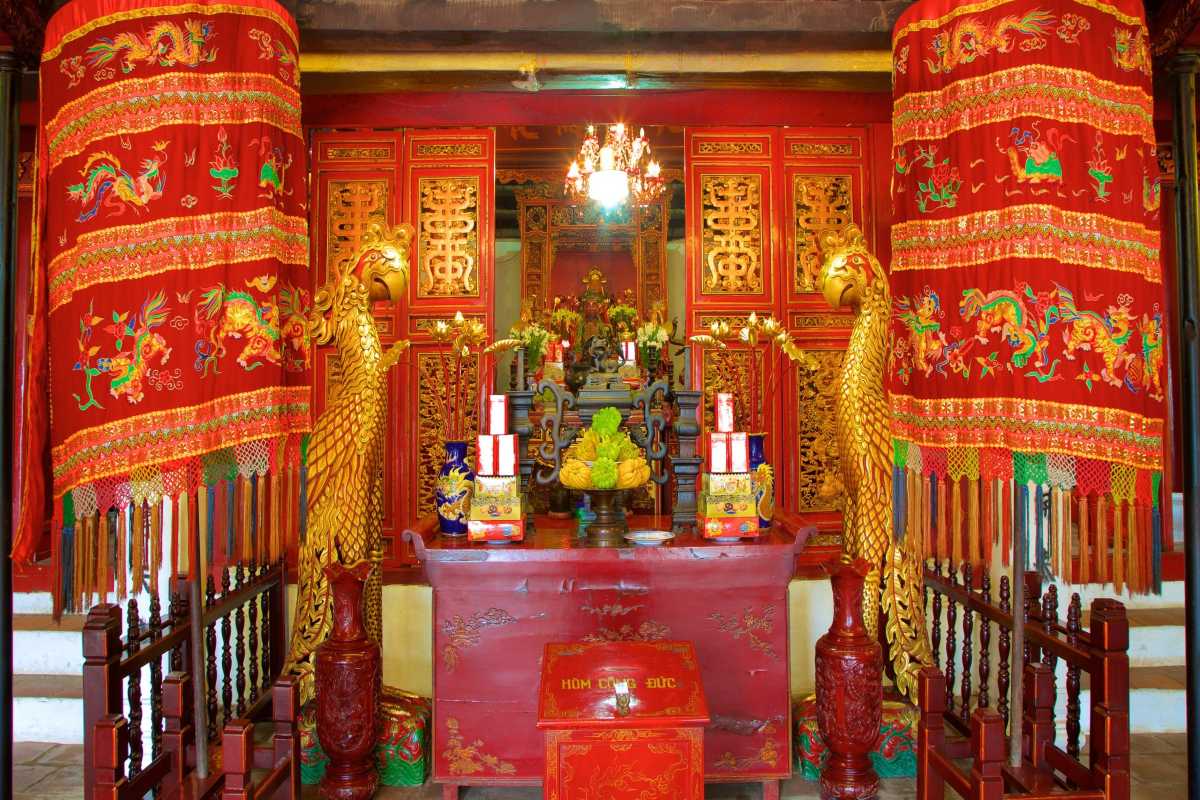
What to See and Do at Ngoc Son Temple
Ngoc Son Temple offers a captivating glimpse into Vietnamese religious art, traditional architecture, and spiritual practice. Situated on a peaceful islet in Hoan Kiem Lake, the temple complex invites visitors to explore its beautifully preserved altars, intricate carvings, and culturally significant landmarks like The Huc Bridge. As you wander through the grounds, you’ll experience a blend of artistic mastery and spiritual solemnity that reflects centuries of Vietnamese heritage. Whether you choose to join guided tours or observe traditional rituals, Ngoc Son Temple provides a rich, immersive experience. Plan your visit to Ngoc Son Temple to discover its unique cultural treasures and vibrant spiritual life.
Experience the beauty and tradition of Ngoc Son Temple through its remarkable structures and activities.
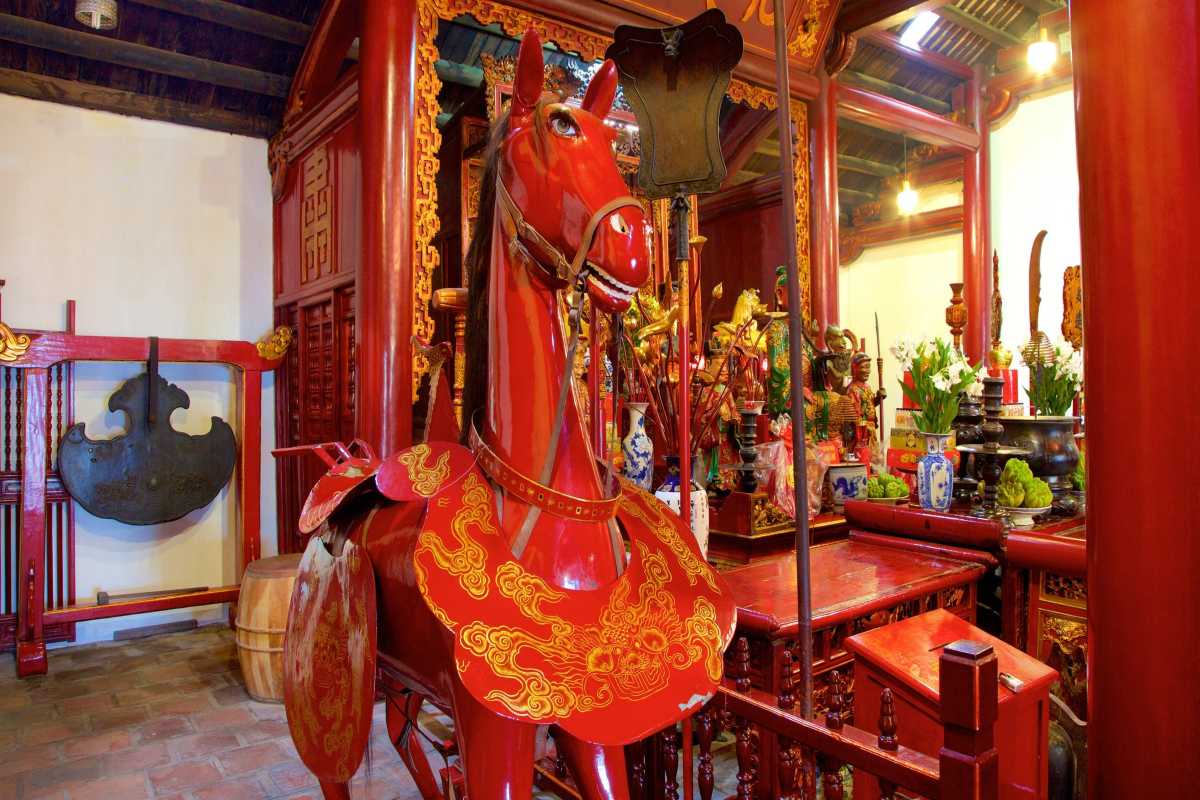
Exploring the temple grounds
The temple grounds of Ngoc Son Temple are rich with significant structures and sacred spaces that tell stories of Vietnamese culture and spirituality. As you explore, you’ll find ornate altars dedicated to revered figures, traditional architecture harmonizing with the natural surroundings, and pathways that lead to peaceful contemplation areas. The layout invites a tranquil stroll through Vietnamese heritage, allowing visitors to connect with the temple’s historic and spiritual essence.
Prepare to discover Ngoc Son Temple key structures that reflect centuries of devotion and artistry.
Key structures and altars inside the temple
Ngoc Son Temple’s interior showcases several notable features:
- Main altar: Dedicated to the spirit of the mountain and national heroes
- Worship halls: Spaces for prayer and traditional offerings
- Small shrines: Honor historical figures and deities
- Decorative roof beams: Embellished with intricate woodwork and motifs
- Incense burners: Central to ritual practices and spiritual offerings
These architectural and spiritual highlights provide a deeper understanding of Vietnamese religious customs. Take time to observe these details during your visit to Ngoc Son Temple.
Notable artworks and carvings
Artistic craftsmanship is evident throughout Ngoc Son Temple, enriching its cultural value.
- Wooden carvings: Detailed depictions of mythical creatures and floral patterns
- Statues: Representations of gods, heroes, and cultural symbols
- Painted panels: Scenes illustrating Vietnamese legends and folklore
- Lacquered decorations: Brightly colored and protective finishes on temple woodwork
- Calligraphy: Traditional inscriptions adding historical context and artistry
These artworks offer a window into Vietnam’s artistic traditions and religious symbolism. Appreciate the skill and meaning behind each piece as you explore Ngoc Son Temple.
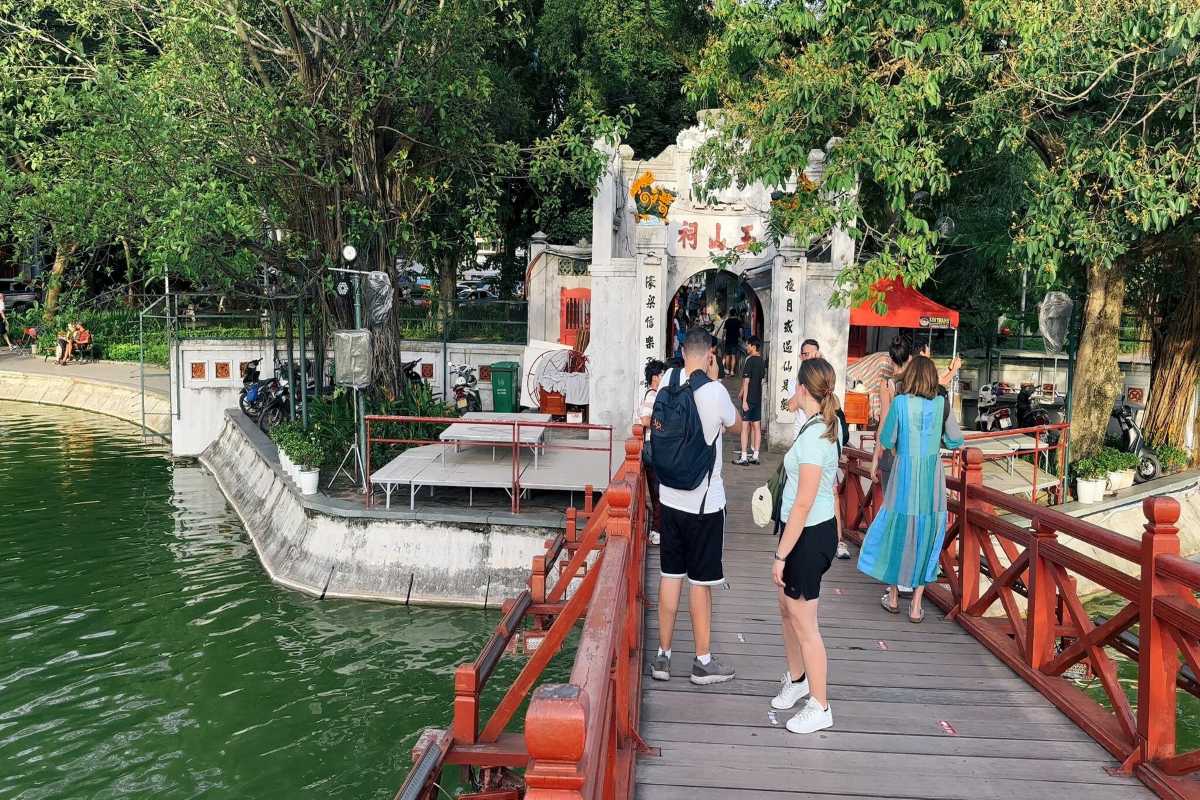
Crossing The Huc Bridge
The Huc Bridge is a striking red wooden pedestrian bridge that leads visitors directly to Ngoc Son Temple across Hoan Kiem Lake. Known as the "Morning Sunlight Bridge," it symbolizes the connection between the earthly world and the spiritual realm. Crossing The Huc Bridge is more than a simple walk; it is a cultural experience rich with history and tradition. Visitors often pause to admire its vibrant color and tranquil surroundings, making it one of Hanoi’s most photographed landmarks. Understanding its cultural significance enhances the meaning of your visit to Ngoc Son Temple.
Plan your visit to cross The Huc Bridge and immerse yourself in Hanoi’s spiritual and cultural heritage.
Historical and cultural significance of the bridge
The Huc Bridge holds deep symbolic meaning within Vietnamese culture and plays a crucial role in accessing Ngoc Son Temple.
- Symbolizes the path from the mundane world to the spiritual domain
- Constructed in traditional Vietnamese architectural style with bright red paint representing happiness and good fortune
- Serves as a physical and metaphorical link connecting visitors to the temple’s sacred grounds
- Frequently featured in Vietnamese art and photography as a cultural icon
- Its design reflects harmony with nature and spiritual philosophy
This bridge is essential to the visitor experience, offering both practical access and cultural insight. Crossing The Huc Bridge invites reflection on Vietnamese spiritual values and history.
Best times for photography
To capture stunning photos of The Huc Bridge, consider these timing tips:
- Early morning: Soft light and fewer crowds create serene photo opportunities
- Late afternoon: Warm golden hour sunlight enhances the bridge’s vibrant red color
- During festivals: The bridge may be decorated, adding cultural context to images
- Avoid midday: Harsh sunlight and busy crowds can detract from photo quality
- Weekdays: Typically less crowded than weekends, allowing clearer shots
Following these tips will help you take memorable photographs of The Huc Bridge and enhance your visit to Ngoc Son Temple.
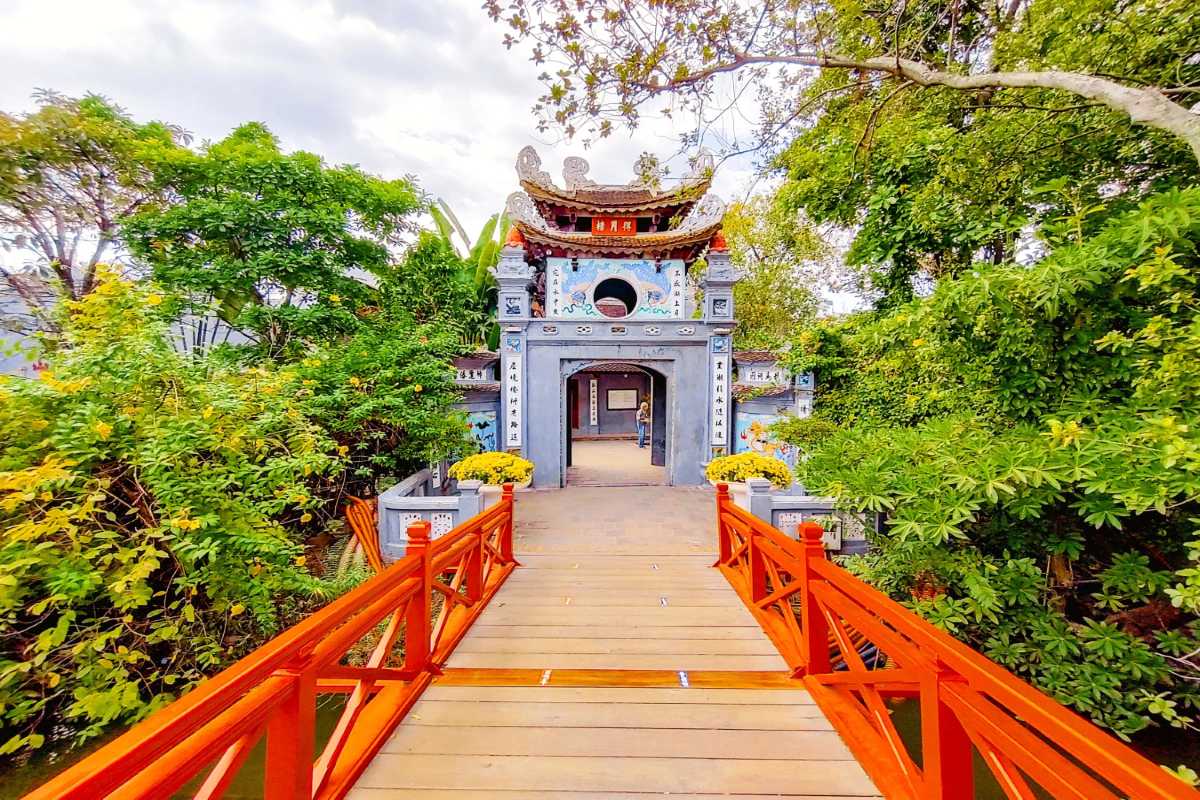
Participating in cultural and spiritual activities
At Ngoc Son Temple, visitors have the opportunity to observe and respectfully participate in traditional Vietnamese prayer rituals and spiritual offerings. These practices are central to the temple’s role as a living cultural and religious site. You can watch locals light incense, make offerings, and engage in quiet prayer, gaining insight into Vietnamese religious customs and temple worship practices. Participating with respect enriches your visit and deepens your connection to the spiritual atmosphere of Ngoc Son Temple.
Engage meaningfully with the cultural traditions by observing prayer rituals at Ngoc Son Temple during your visit.
Prayer rituals and offerings
Visitors at Ngoc Son Temple can observe several important ceremonies and customary offerings:
- Lighting incense sticks to honor ancestors and deities
- Presenting offerings such as fruit, flowers, and symbolic gifts
- Reciting prayers or silent reflection at altars
- Participating in communal chants during special festivals
- Using joss paper and other ritual items according to tradition
These rituals highlight the temple’s spiritual significance and invite respectful participation. Experiencing temple offerings firsthand provides a deeper understanding of Vietnamese faith and culture.
Observing local customs respectfully
To honor the cultural traditions at Ngoc Son Temple, visitors should follow these etiquette guidelines:
- Dress modestly with covered shoulders and knees
- Remove shoes before entering sacred areas
- Speak softly and maintain a respectful demeanor
- Avoid touching altars or religious objects
- Refrain from disruptive behavior or photography during prayers
Following this etiquette ensures a respectful visit and fosters authentic engagement with the temple’s spiritual environment. Embrace the customs to fully appreciate your time at Ngoc Son Temple.
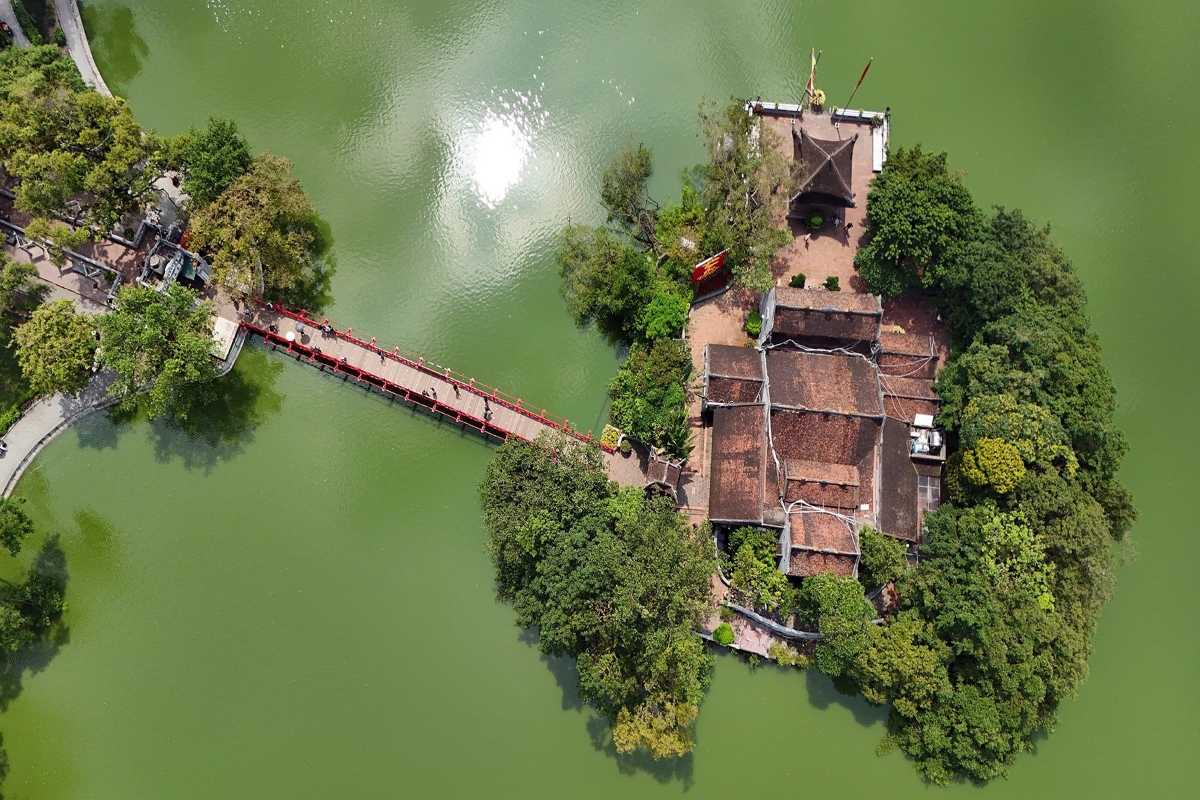
Guided tours and educational opportunities
Visitors to Ngoc Son Temple can enrich their experience by joining guided tours that provide deeper cultural, historical, and spiritual insights. These tours often include expert commentary on the temple’s architecture, symbolism, and its role in Vietnamese heritage. Educational tours in Hanoi frequently feature Ngoc Son Temple as a key stop, allowing travelers to ask questions and engage more meaningfully with the site. Whether joining a group or hiring a private guide, these options help you gain a fuller understanding of the temple’s significance.
Explore Ngoc Son Temple with guided tours to enhance your appreciation and knowledge of this historic site.
Availability of local guides and tours
Authentic guided experiences at Ngoc Son Temple are widely available:
- Local guides fluent in English and other languages offer personalized tours
- Group tours can be booked through travel agencies and online platforms
- Private guides provide flexible schedules and in-depth cultural context
- Booking in advance is recommended during peak tourist seasons
- Some Hanoi hotels offer combined city and temple tour packages
Hiring local guides ensures a knowledgeable and immersive visit to Ngoc Son Temple.
Suggested topics and questions for guides
To maximize the value of your guided tour at Ngoc Son Temple, consider asking about:
- The historical background and founding story of Ngoc Son Temple
- Symbolism behind The Huc Bridge and temple carvings
- The cultural and spiritual significance of key festivals held at the temple
- Details about prominent figures associated with the site, like Tran Hung Dao
- How traditional Vietnamese religious practices are observed today
Preparing thoughtful questions deepens your engagement with the temple’s rich heritage.
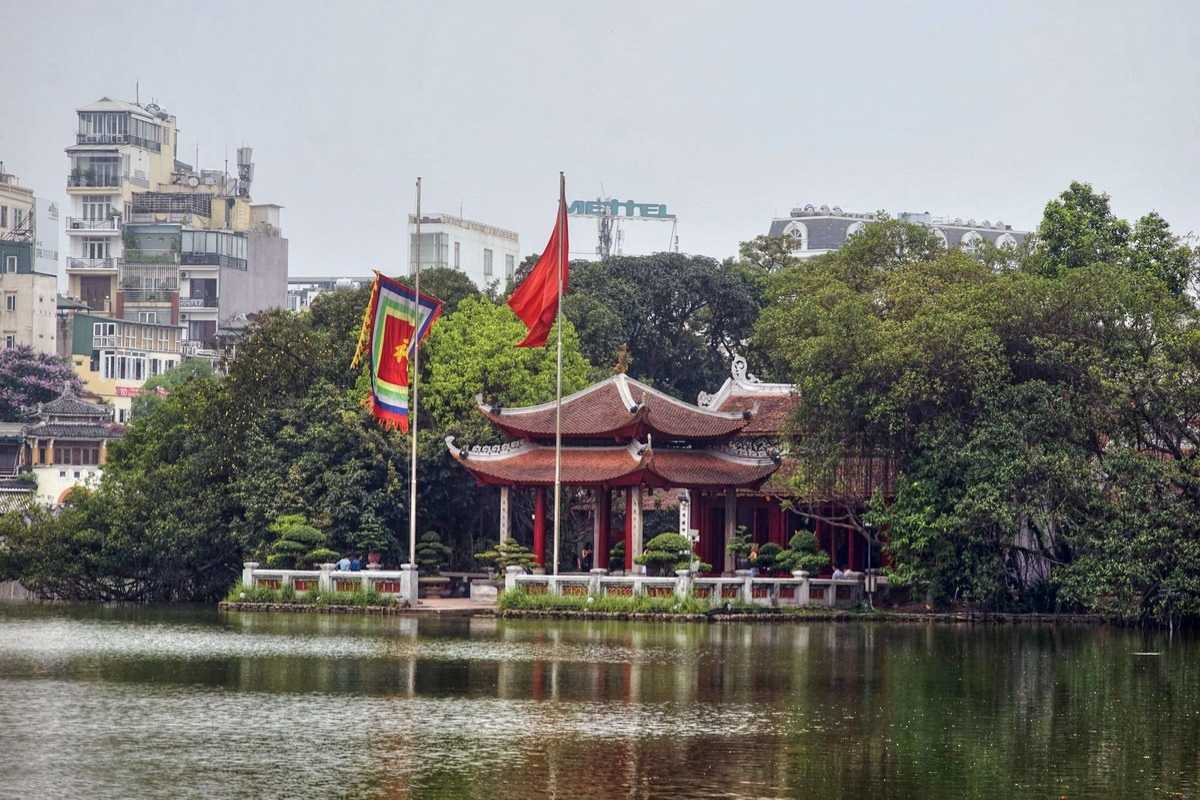
Nearby Attractions and Complementary Experiences
Near Ngoc Son Temple, visitors will find a rich variety of attractions and activities that deepen cultural immersion in Hanoi. From scenic spots like Hoan Kiem Lake and the Turtle Tower to vibrant street life in the Hanoi Old Quarter, this area offers plenty to explore. Cultural performances, historic landmarks, and local markets add layers to your travel experience, making it easy to create a full-day itinerary packed with discovery. Enjoy walking tours, traditional theater shows, and authentic street food as part of your visit near Ngoc Son Temple.
Extend your Hanoi adventure by exploring these nearby highlights around Ngoc Son Temple.
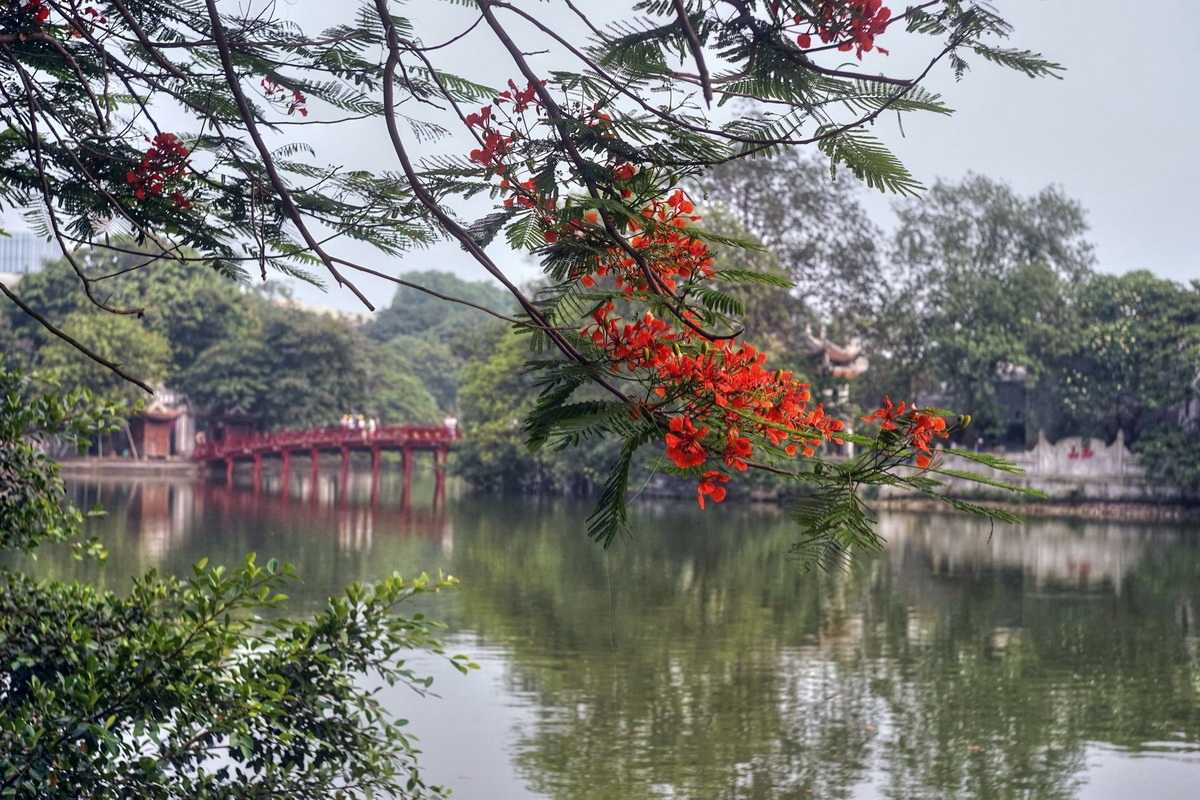
Hoan Kiem Lake and Turtle Tower
Hoan Kiem Lake is a serene urban oasis, beloved for its scenic beauty and cultural significance. At its center stands the iconic Turtle Tower, a symbol of Hanoi’s history and legend. The lake’s tranquil waters provide a peaceful backdrop for leisurely walks and reflection. Visitors often pause here to absorb the atmosphere before heading to nearby landmarks such as Ngoc Son Temple.
- Picturesque setting perfect for photography and relaxation
- Turtle Tower dates back centuries and is tied to local myths
- Frequented by locals practicing tai chi in the mornings
- Adjacent to popular walking paths and parks
Visiting Hoan Kiem Lake and Turtle Tower complements your cultural journey at Ngoc Son Temple.
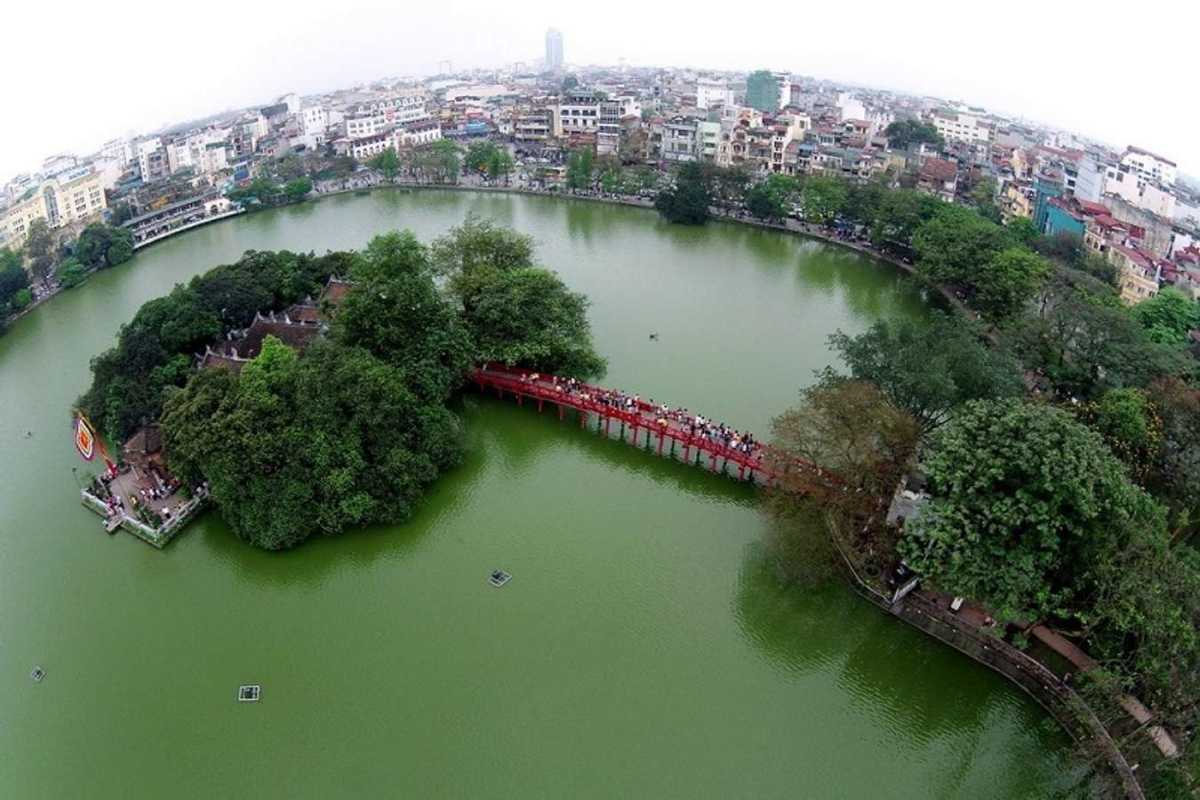
Hanoi Old Quarter exploration
The Hanoi Old Quarter is a bustling neighborhood filled with narrow streets, historic architecture, and vibrant markets. It offers visitors a sensory-rich experience with traditional shops, street food vendors, and cultural landmarks. Exploring the Old Quarter reveals Hanoi’s dynamic blend of past and present.
- Notable streets include Hang Gai (silk street) and Hang Bac (silver street)
- Numerous cafés and eateries serve authentic Vietnamese cuisine
- Walking tours available to discover hidden alleys and local crafts
- Rich architectural heritage with colonial and traditional houses
Include Hanoi Old Quarter in your itinerary for a lively cultural experience near Ngoc Son Temple.
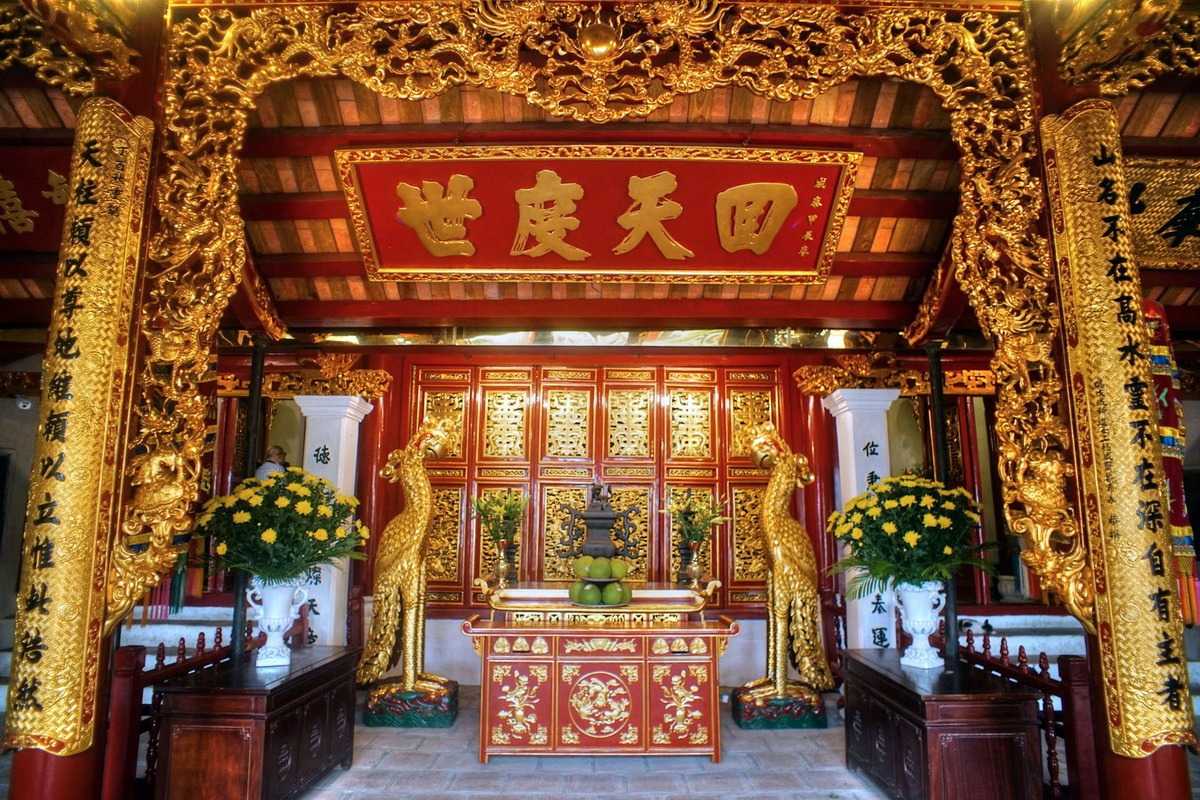
Thang Long Water Puppet Theater
The Thang Long Water Puppet Theater offers a unique cultural performance featuring traditional Vietnamese water puppetry. Located near Ngoc Son Temple, this theater is a must-visit for those interested in Vietnam’s performing arts.
- Shows depict folk tales and historical stories with music and puppetry
- Tickets available online and at the theater box office
- Evening performances attract both tourists and locals
- A captivating way to experience Vietnam’s cultural heritage
Enjoy a traditional performance at Thang Long Water Puppet Theater after your temple visit.
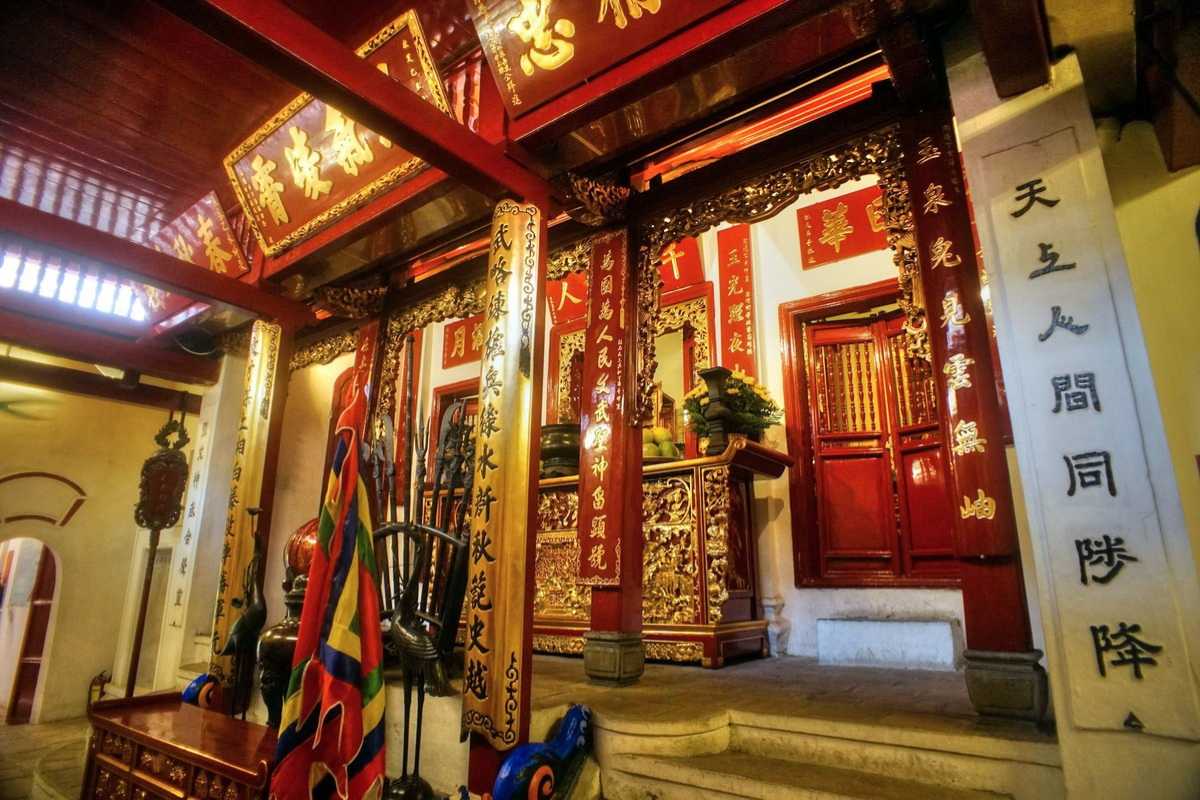
St. Joseph’s Cathedral and other historical sites
Nearby St. Joseph’s Cathedral is a striking Gothic Revival landmark in Hanoi, reflecting the city’s colonial past. Along with other historic sites, it offers insight into Hanoi’s diverse cultural history.
- Built in the late 19th century with French architectural influence
- Central location makes it easy to visit alongside Ngoc Son Temple
- Nearby historical sites include the Old Post Office and French Quarter
- Opportunities for photography and guided historical tours
Add St. Joseph’s Cathedral to your list of cultural stops near Ngoc Son Temple for a well-rounded exploration.
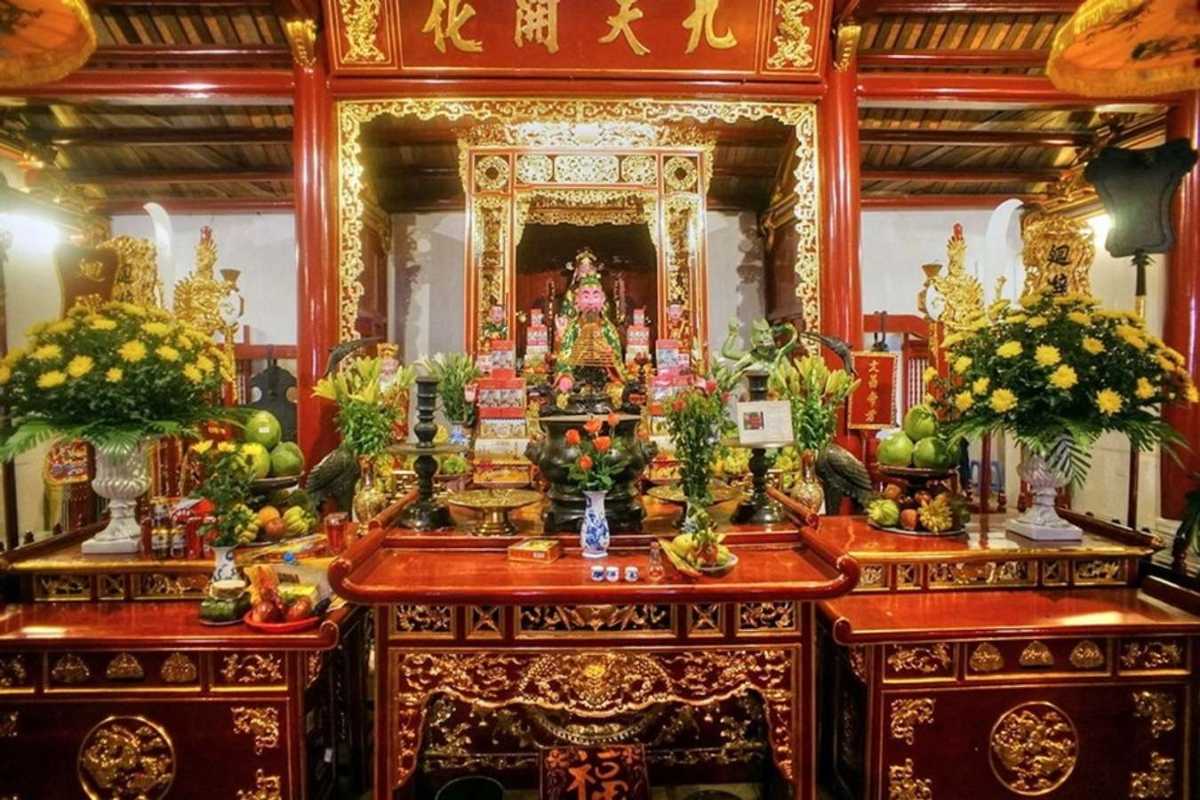
Local markets and street food experiences
Hanoi’s vibrant street food culture and markets are easily accessible from Ngoc Son Temple. These lively spots provide a taste of authentic Vietnamese flavors and local daily life.
- Dong Xuan Market: a large traditional market selling food, clothes, and souvenirs
- Hang Be Market: known for fresh produce and street snacks
- Popular dishes nearby include pho, bun cha, and egg coffee
- Food tours and cooking classes available in the area
Exploring Hanoi street food markets adds delicious local flavor to your visit around Ngoc Son Temple.
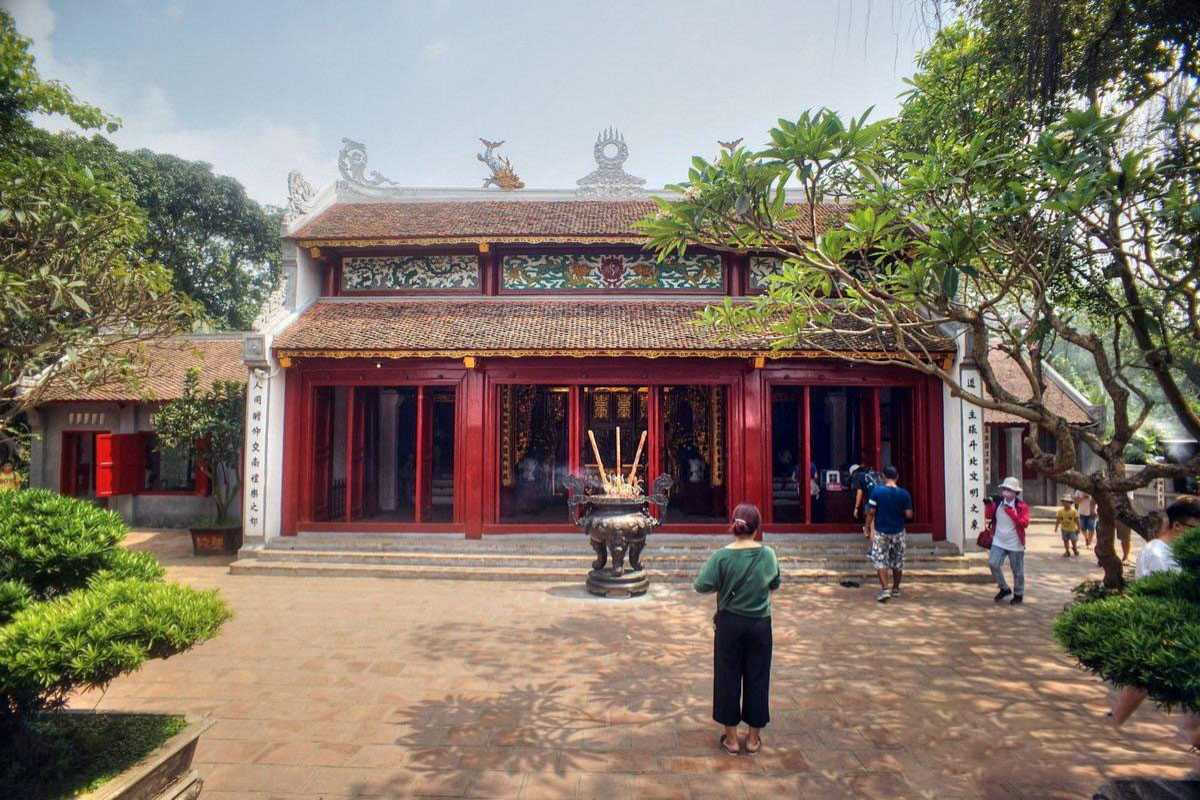
Practical Tips for Visitors
Visiting Ngoc Son Temple is a rewarding experience when you are prepared with practical knowledge. This section offers essential tips on etiquette, accessibility, photography, safety, and how to combine your visit with other nearby Hanoi attractions. Following these guidelines will ensure your visit is respectful, enjoyable, and safe. With clear advice on dress codes, visitor behavior, and security, you can confidently explore the temple and its surroundings. Plan your visit to Ngoc Son Temple equipped with these helpful insights.
Prepare yourself for a smooth and meaningful visit to Ngoc Son Temple by following these practical tips.
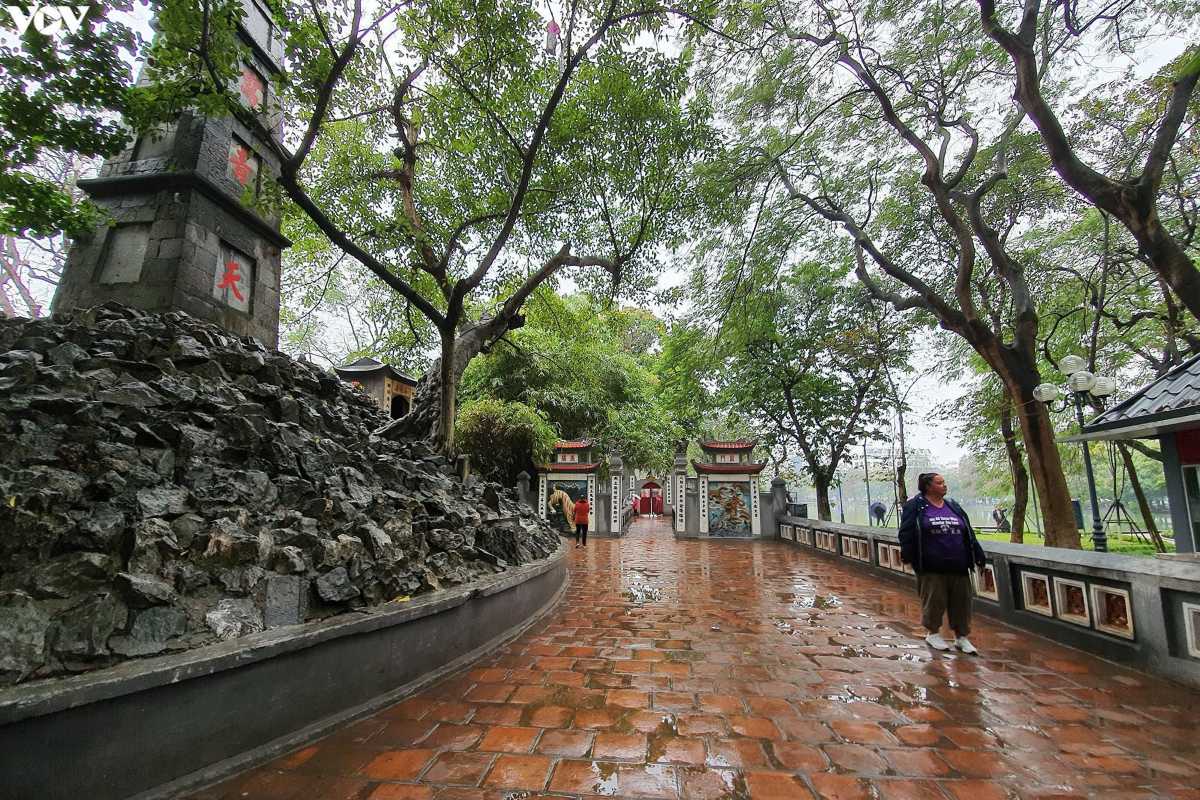
Etiquette and dress code at the temple
Respecting local customs at Ngoc Son Temple ensures a positive experience for all. Visitors should dress modestly, covering shoulders and knees, to honor the sacred atmosphere. Maintain a quiet and respectful demeanor throughout the visit, avoiding loud conversations or disruptive behavior. Refrain from touching religious artifacts and always ask before taking photographs of worshippers. Observing these etiquette guidelines helps preserve the temple’s spiritual integrity and shows respect for Vietnamese culture.
Follow Ngoc Son Temple etiquette to honor local traditions and enjoy a meaningful visit.
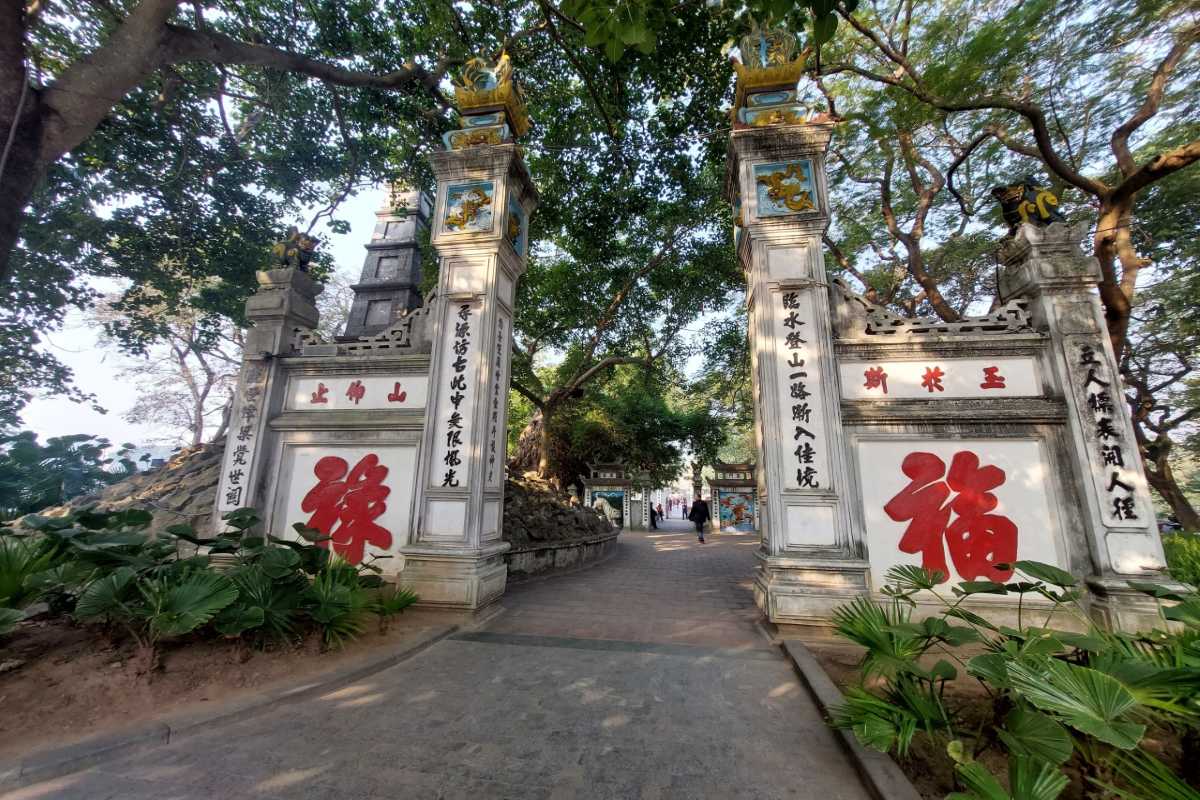
Accessibility considerations
Ngoc Son Temple offers limited accessibility for visitors with mobility challenges due to its traditional design and location on a small island accessible via The Huc Bridge. While the temple grounds are mostly flat, some steps and uneven surfaces may present obstacles. Visitors using wheelchairs or with reduced mobility should prepare accordingly. Nearby facilities and assistance options are limited but Hanoi’s tourism services can provide support if arranged in advance.
Assess Ngoc Son Temple accessibility carefully to plan your visit with comfort and confidence.
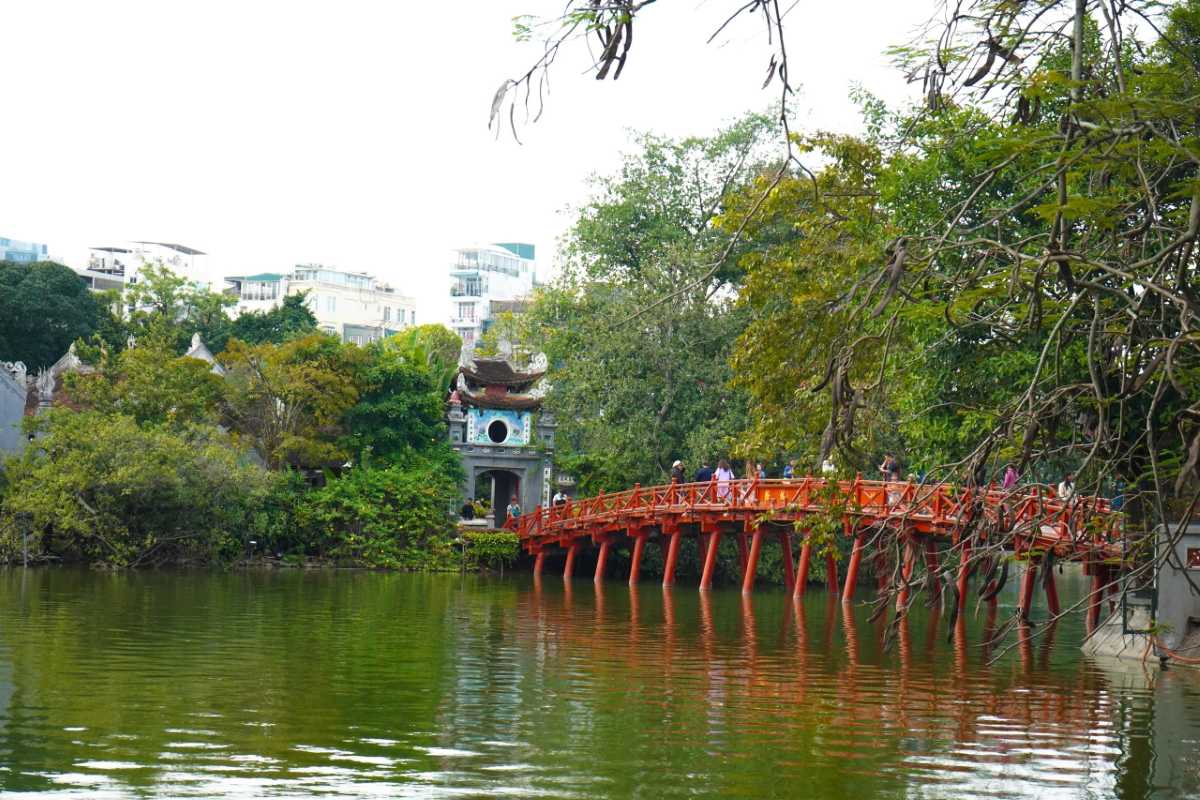
Photography rules and recommendations
Photography is welcomed at Ngoc Son Temple, but visitors should adhere to specific rules to respect the sacred space. Avoid using flash inside the temple and do not photograph worshippers during prayer without permission. Some areas may restrict photography entirely; always observe signage and guidance from staff. Early morning and late afternoon offer the best natural lighting for photos of the temple and The Huc Bridge.
Follow these photography rules at Ngoc Son Temple to capture beautiful images while honoring the site.

Safety and security advice
Visitors to Ngoc Son Temple should remain aware of their surroundings to ensure a safe visit. Keep personal belongings secure, especially in crowded areas. Beware of common tourist scams and unauthorized guides. The temple area is generally safe, but basic precautions such as staying hydrated and protecting against the sun are advisable. Emergency contacts and first aid services in the nearby Hanoi Old Quarter provide additional security.
Practice these safety tips in Hanoi for a worry-free visit to Ngoc Son Temple.
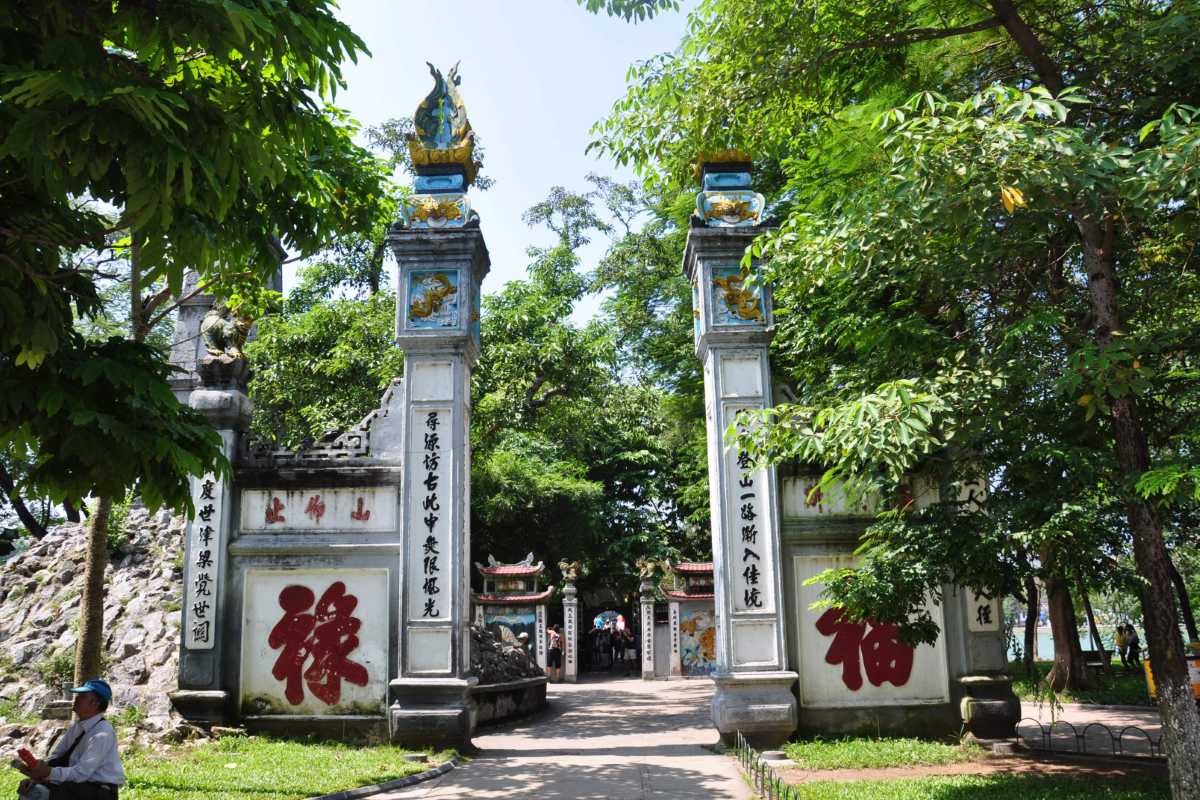
Combining Ngoc Son Temple with other Hanoi attractions
Ngoc Son Temple is ideally situated near several of Hanoi’s top attractions, making it easy to craft a well-rounded itinerary. Combine your visit with a stroll around Hoan Kiem Lake, explore the bustling Hanoi Old Quarter, and enjoy cultural shows at the Thang Long Water Puppet Theater. Nearby landmarks like St. Joseph’s Cathedral add historical depth to your trip. Plan your sightseeing to maximize cultural immersion and convenience.
Enhance your Hanoi experience by including Ngoc Son Temple and nearby attractions in your travel plans.

Conservation and Preservation Efforts
Protecting Ngoc Son Temple and its surrounding environment is vital to preserving Hanoi’s cultural heritage and natural beauty. This section explores ongoing restoration projects, environmental protection of Hoan Kiem Lake, and sustainable tourism initiatives that ensure the temple remains a treasured landmark for future generations. Understanding these efforts helps visitors appreciate the temple’s importance and encourages responsible tourism practices that minimize impact. By learning how you can support preservation, you contribute to safeguarding this historic site and its surroundings.
Discover how conservation efforts protect Ngoc Son Temple and how you can help preserve its legacy.

Historical restoration projects
Over the years, multiple restoration projects have been undertaken to maintain the structural integrity and artistic value of Ngoc Son Temple. These efforts preserve original wooden carvings, lacquer work, and the iconic architecture that defines the temple’s character. Restoration also includes repairs to The Huc Bridge and upkeep of altar statues. Careful preservation ensures that the temple continues to reflect traditional Vietnamese craftsmanship and historical authenticity.
Key restoration initiatives protect the temple’s heritage and enrich the visitor experience.

Environmental protection of Hoan Kiem Lake
The health of Hoan Kiem Lake is closely tied to the temple’s setting and cultural significance. Various environmental protection measures help maintain water quality and preserve the lake’s ecosystem, including:
- Regular water cleaning and pollution control programs
- Regulations limiting construction and waste disposal around the lake
- Community awareness campaigns to protect local flora and fauna
- Monitoring and protection of endangered turtle species
These efforts sustain the lake’s natural beauty and support the spiritual ambiance of Ngoc Son Temple.

Sustainable tourism initiatives
Sustainable tourism practices around Ngoc Son Temple focus on balancing visitor access with preservation. Initiatives include:
- Promoting eco-friendly visitor behavior and waste reduction
- Encouraging use of public transport and walking tours to reduce emissions
- Supporting local communities through responsible tourism programs
- Implementing visitor limits during peak times to prevent overcrowding
These programs protect the site’s cultural and environmental integrity while enhancing visitor satisfaction.

How visitors can support preservation
Visitors play a crucial role in conserving Ngoc Son Temple by adopting responsible behaviors such as:
- Respecting temple rules and avoiding damage to structures and artworks
- Disposing of waste properly and minimizing plastic use
- Participating in local conservation awareness efforts if available
- Choosing eco-friendly transport and tour options
- Supporting local artisans and businesses to sustain the community
By following these simple actions, you contribute positively to preserving Ngoc Son Temple’s legacy.

Conclusion and Final Recommendations
Visiting Ngoc Son Temple offers a unique window into Hanoi’s rich cultural and historical heritage. This final section highlights the temple’s significance, practical tips to enhance your experience, and guidance on integrating the visit into a broader Hanoi itinerary. By planning thoughtfully and respecting local customs, you ensure a rewarding and memorable trip. Whether you are a first-time traveler or returning visitor, these recommendations help you make the most of your time at Ngoc Son Temple and throughout Hanoi.
End your Hanoi journey on a high note by including Ngoc Son Temple in your travel plans with confidence and insight.

Summary of why Ngoc Son Temple is a must-visit
Ngoc Son Temple stands as a captivating cultural landmark in Hanoi, known for:
- Its rich historical and spiritual significance in Vietnamese culture
- Iconic features such as The Huc Bridge and beautifully preserved architecture
- A serene setting on Hoan Kiem Lake offering picturesque views
- Opportunities to engage with traditional festivals and local customs
These qualities make Ngoc Son Temple a compelling destination for any traveler seeking to experience Hanoi’s heritage firsthand.

Tips for maximizing your visit experience
To enjoy your visit to Ngoc Son Temple fully:
- Arrive early to avoid crowds and capture the best photos
- Dress modestly and respect local customs and etiquette
- Consider joining a guided tour for deeper insights
- Combine your visit with nearby attractions for a full day of exploration
- Stay hydrated and wear comfortable shoes for walking
Following these tips ensures a smooth, respectful, and enriching experience at the temple.

Suggested itinerary integration with Hanoi sightseeing
Combine your Ngoc Son Temple Hanoi itinerary with nearby highlights for an efficient and memorable day:
- Morning visit to Ngoc Son Temple and stroll around Hoan Kiem Lake
- Explore the vibrant streets and markets of Hanoi Old Quarter
- Attend a traditional show at Thang Long Water Puppet Theater
- Visit St. Joseph’s Cathedral and other historical landmarks
- Sample local street food for an authentic culinary experience
This itinerary balances cultural exploration, sightseeing, and local flavors to showcase Hanoi’s best.
Mike Nguyen
Travel Advisor
Mobile: +84917506881 (whatsapp available)
Email: contact@asiatravellinks.com
Faqs
Ngoc Son Temple is renowned for its rich cultural heritage and stunning location on Hoan Kiem Lake in Hanoi. It is a historic spiritual site dedicated to important Vietnamese figures and traditional beliefs.
- The temple honors national hero Tran Hung Dao and the god of literature.
- It is famous for its iconic red-painted The Huc Bridge, connecting it to the shore.
- The temple showcases traditional Vietnamese architecture and intricate wood carvings.
Visiting Ngoc Son Temple offers a deep dive into Vietnam’s history and spirituality. Plan your visit to experience its serene beauty firsthand.
Getting to Ngoc Son Temple from the Hanoi Old Quarter is straightforward due to its central location near Hoan Kiem Lake.
- Walking is the most popular option, taking about 10 to 15 minutes through scenic streets.
- Public buses serve routes stopping near the lake; check local schedules for exact lines.
- Taxis, cyclos, and motorbike taxis provide convenient alternatives for faster access.
Following clear directions ensures you arrive comfortably. Walking offers a chance to enjoy the vibrant atmosphere of the Old Quarter along the way.
Yes, there is an entry fee required to access Ngoc Son Temple, which helps support its maintenance and preservation.
- Tickets are reasonably priced and often discounted for students, seniors, and children.
- Visitors can purchase tickets on-site at the entrance or through authorized vendors.
- Combined tickets may be available including access to other nearby cultural sites.
Knowing the ticketing process beforehand helps ensure a smooth visit without surprises.
Ngoc Son Temple is open to visitors daily, with consistent hours to accommodate tourists and locals.
- Typical opening hours are from early morning until early evening, usually around 8:00 AM to 5:00 PM.
- Hours may vary slightly on public holidays or during special events.
- Arriving early can help you avoid peak crowds and enjoy a quieter experience.
Planning your visit during official hours guarantees access to this cultural landmark.


